Adventurers in the Rockies
Chapter Twenty-five
Heading south and west through Colorado, New Mexico, Arizona
to California.
Chasing the Southwest Chief in southern Colorado and
into New Mexico.
Photos of Semaphores with the Southwest Chief.
July 24, 2016
Sunday
by
Robin Bowers
Text and Photos by Author
The
author retains all rights. No reproductions are allowed
without the author's consent
Comments are appreciated at...yr.mmxx@gmail.com
Sunday morning found the
conventioneers packing and heading home after an exciting week
spent in the mountains of Colorado. Last night I worked on
packing my bags so as to be ready for departure in the morning.
After having my last breakfast in the motel dining room, I meet
up with Elizabeth and Chris G., loaded the car and we proceeded
to the Central Park A line station dropping off Elizabeth as she
was going to take the train to Denver International Airport.
From there Chris and I proceeded to I-70 east
to I-225 to I-25. From here we drove a straight shot down I-25,
a highway we have traveled many times I feel like old friend, to
Trinidad to see their railroad display.
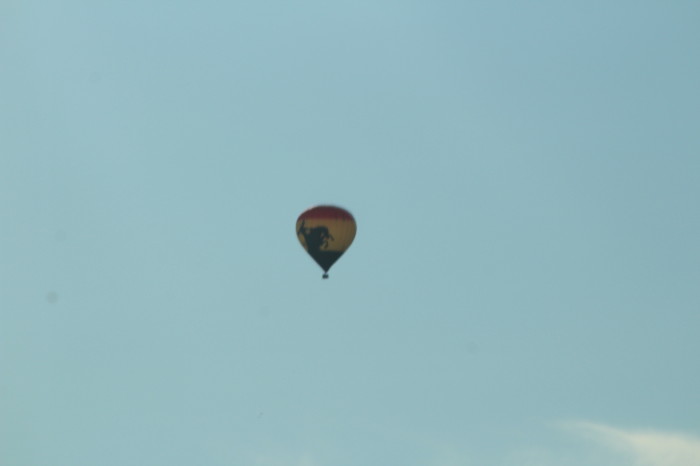
Spotted these hot air balloons along I-25.
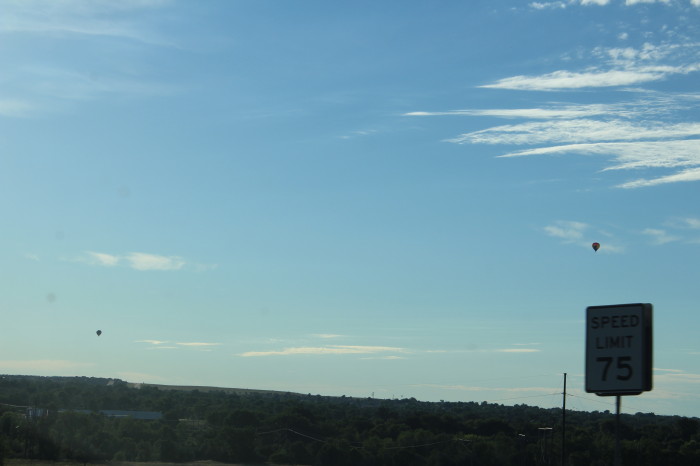
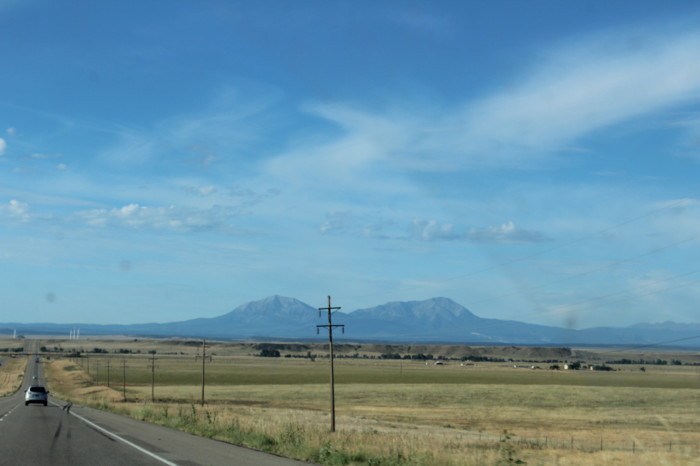
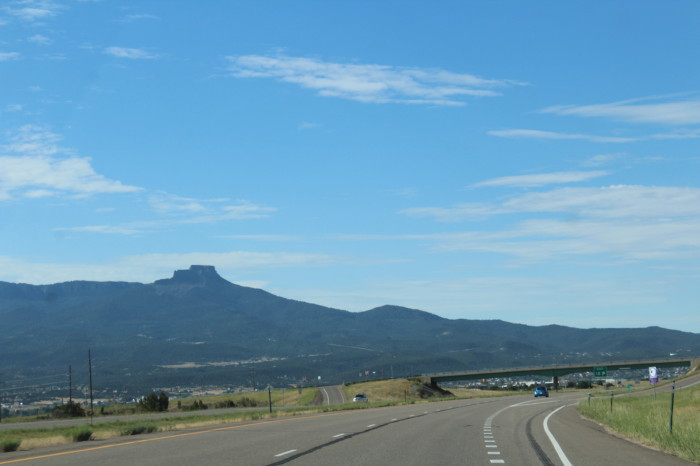
Approaching Trinidad with Fishers Peak in background.
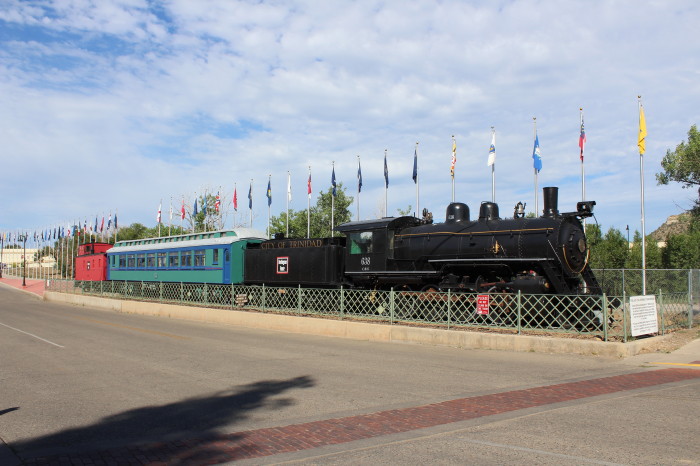
Colorado & Southern 2-8-0 638.
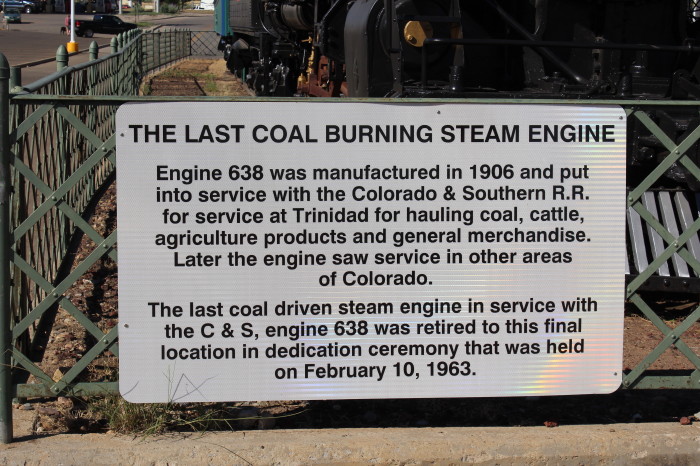
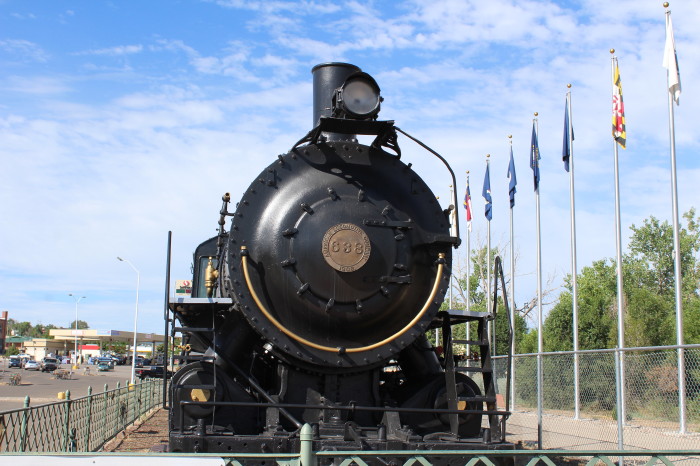
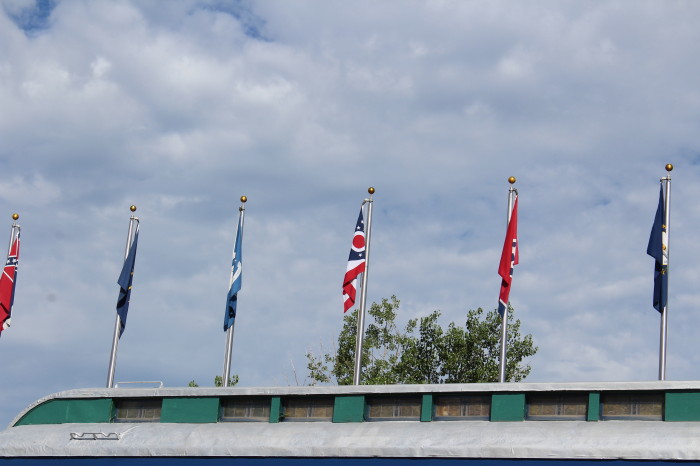
State of Ohio flag front and center.
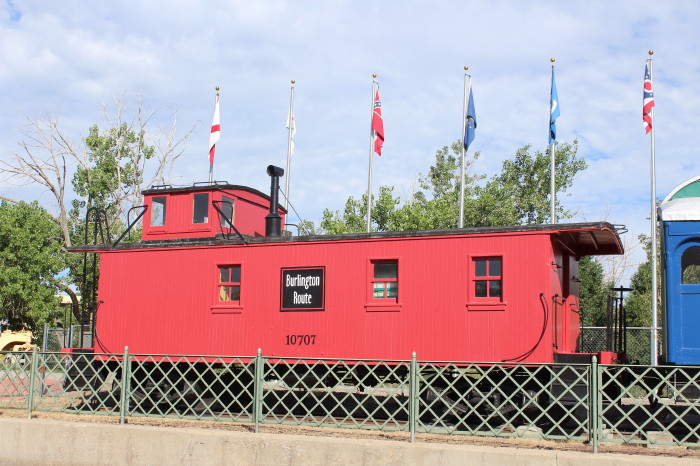
CB&Q caboose 10707.
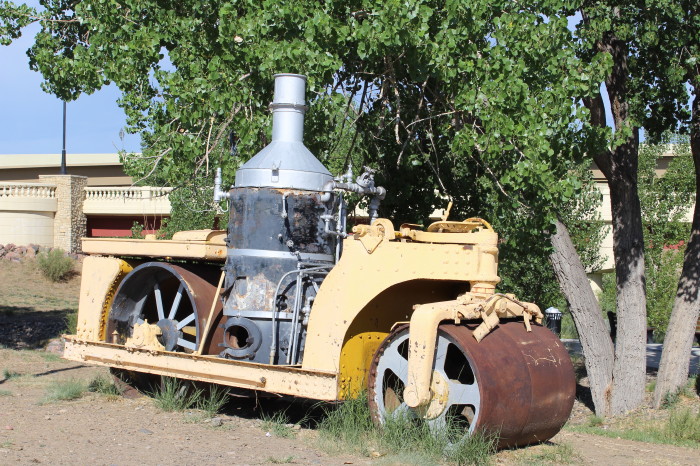
A very old steam roller.
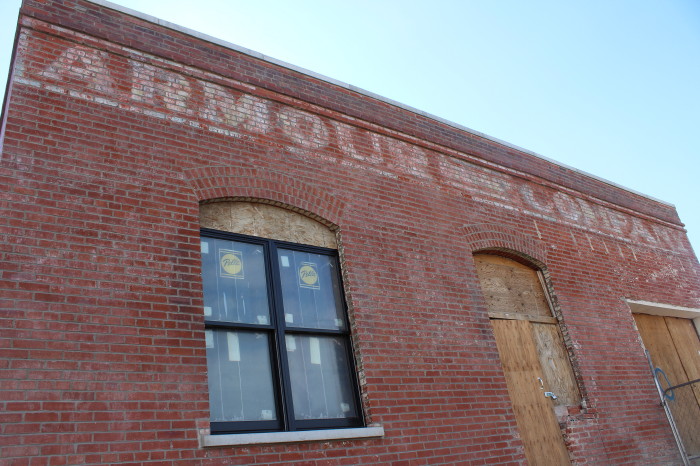
From the train display, we drove to the Trinidad rail yard to see
some old buildings.
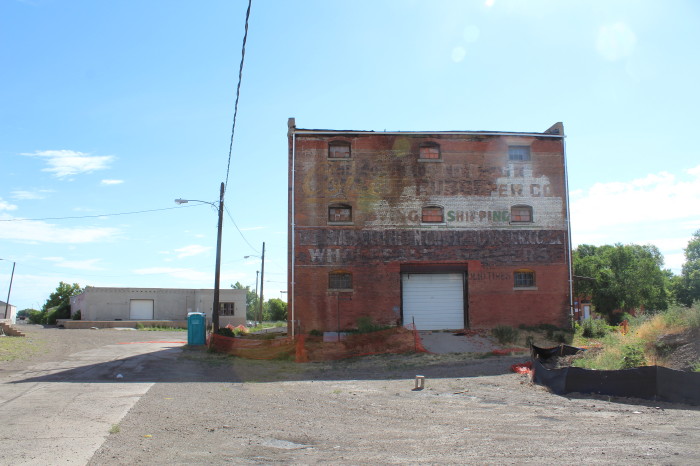
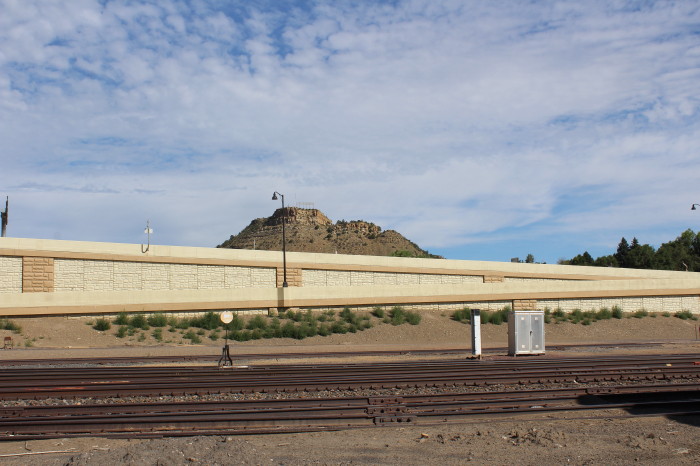
Main line with I-25 in back.
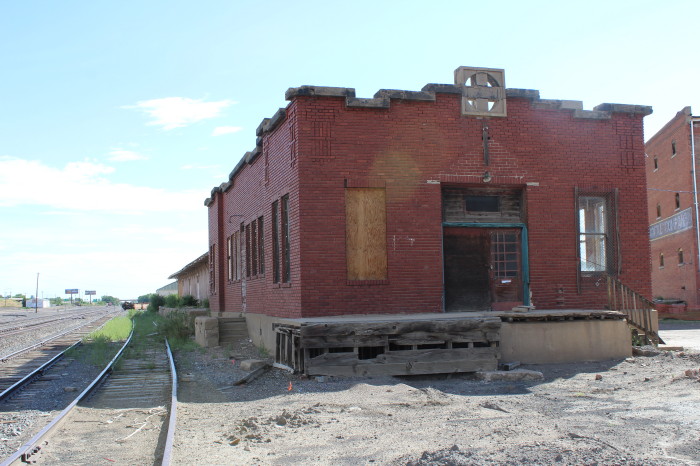
The Santa Fe Railroad Trinidad freight house. Now we will wait for
our first look of the Southwest Chief and its stop here.
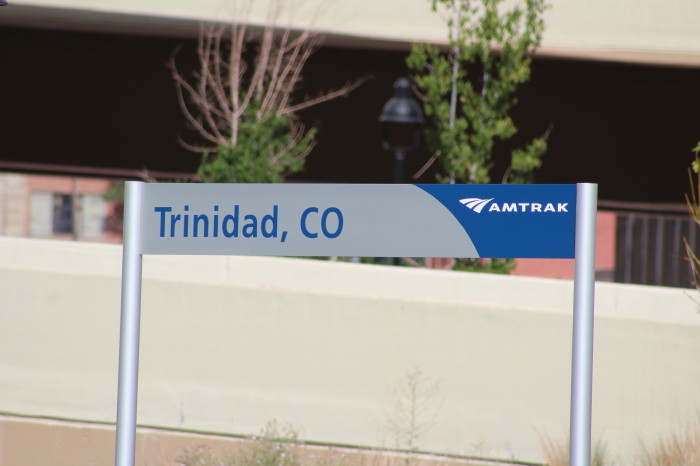
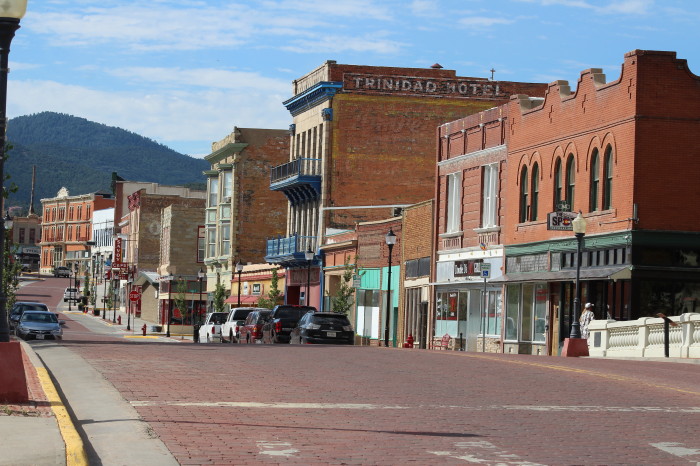
A sleepy Sunday morning in Trinidad.
Trinidad, below the Santa Fe
Trail's landmark Fisher's Peak, began as a supply center for the
westward trail. The historic downtown area, designated Corazon
de Trinidad (Heart of Trinidad), is known for its
Victorian architecture, brick streets, shops and restaurants.
The town was shaped by the influence of the Spanish, who came
from the Southwest, and by the ranching and mining interests to
the east and north. An early visitor was scout Kit Carson, whose
name and statue mark a park on Kansas Street.
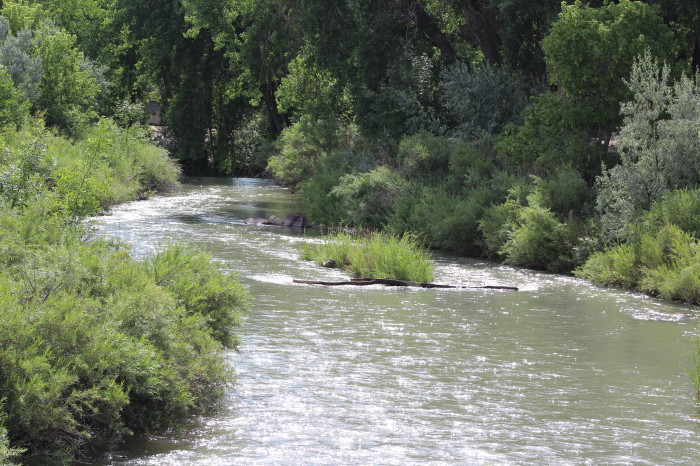
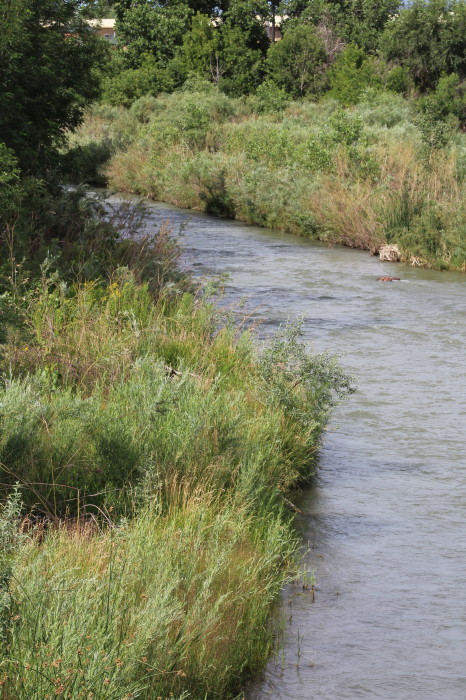
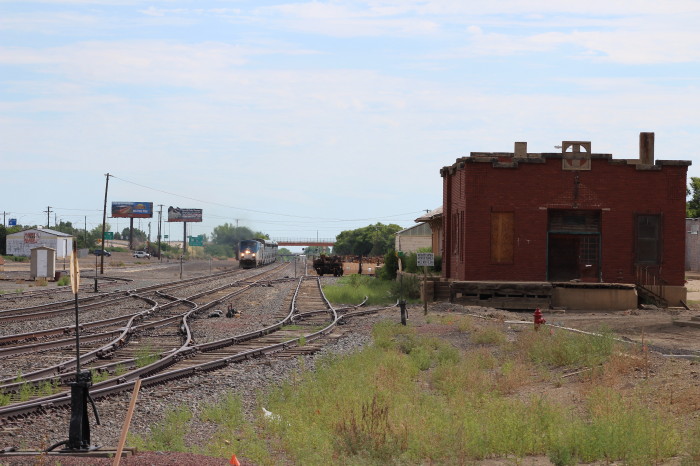
The Southwest Chief on approach.
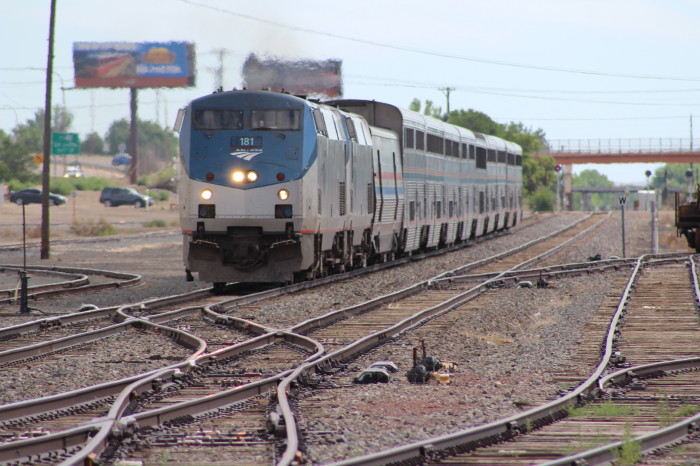
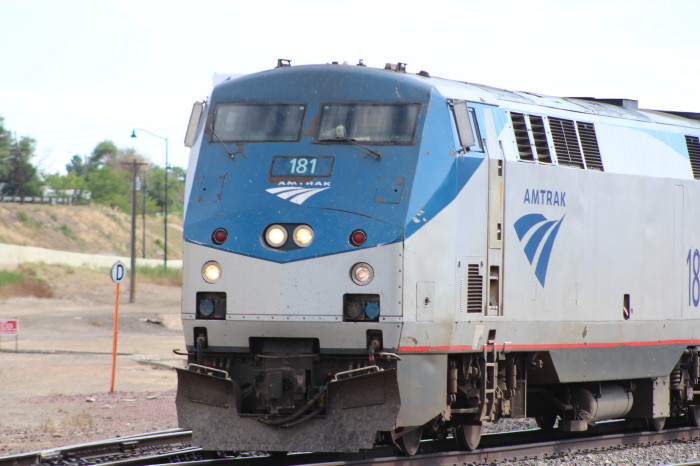
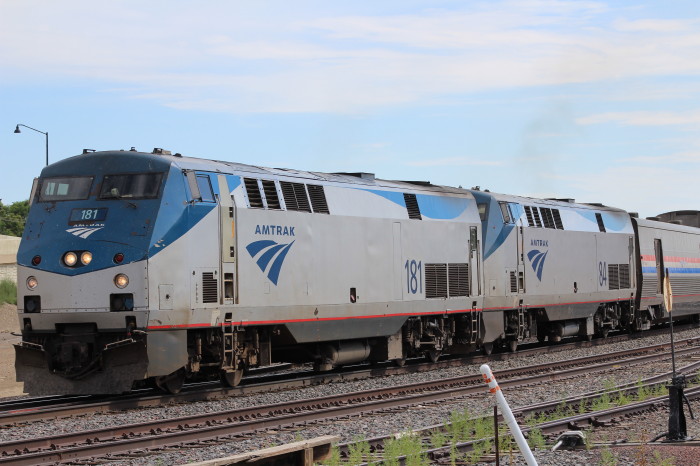
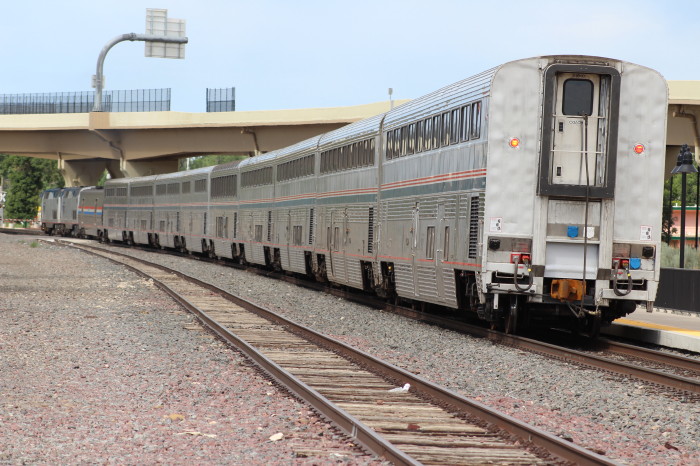
Amtrak # 3 westbound at Trinidad on schedule at 9:50. In 22 hours
it was schedule to arrive in Los Angeles.
We left town and headed south
on I-25 to Starkville exit and set up at the grade crossing at
County Road 18.3 for our next set of photos.
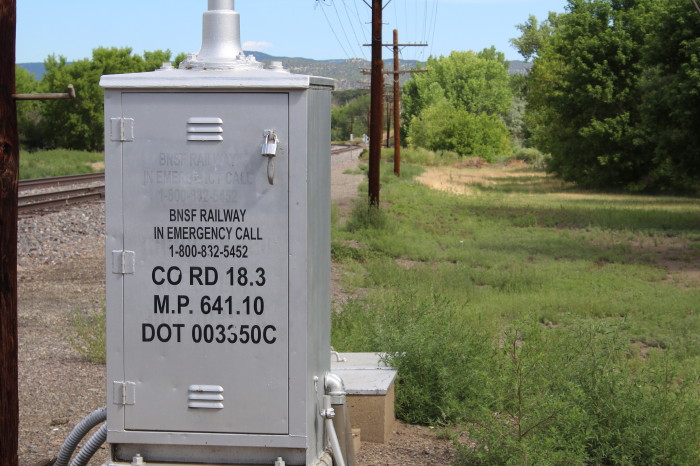
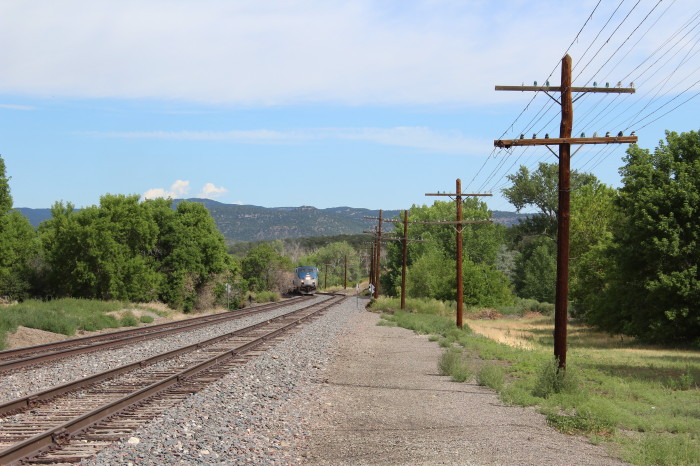
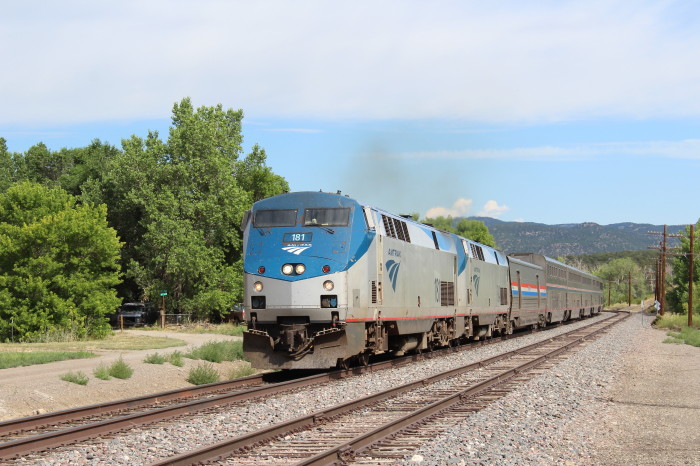
The Southwest Chief at Starkville. We got back on I-25 south to
the Clear Creek Road exit and went out on the bridge over Clear
Creek and BNSF railroad and set for the next set of pictures.
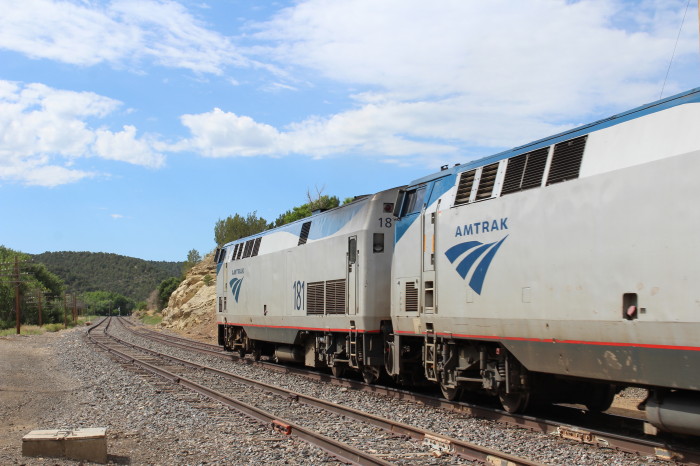
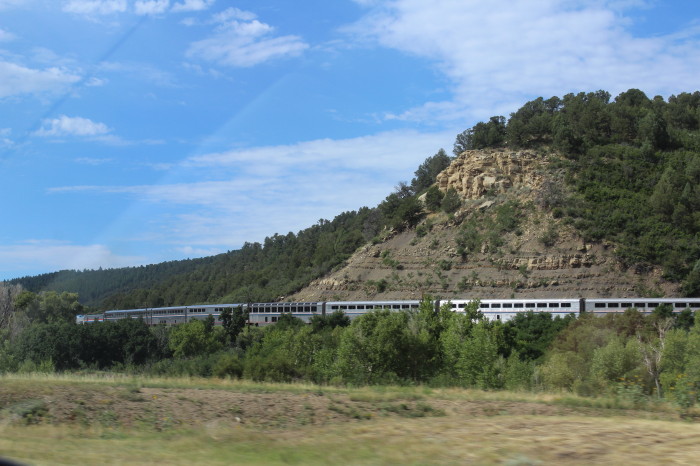
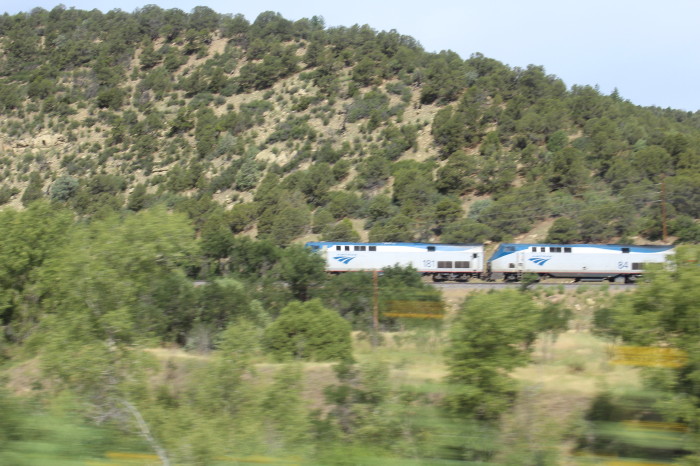
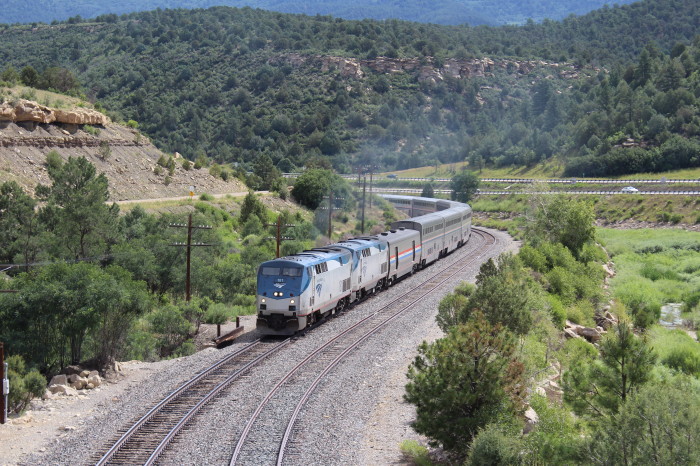
The Southwest Chief from the bridge at the Clear Creek exit off
I-25, seen in back.
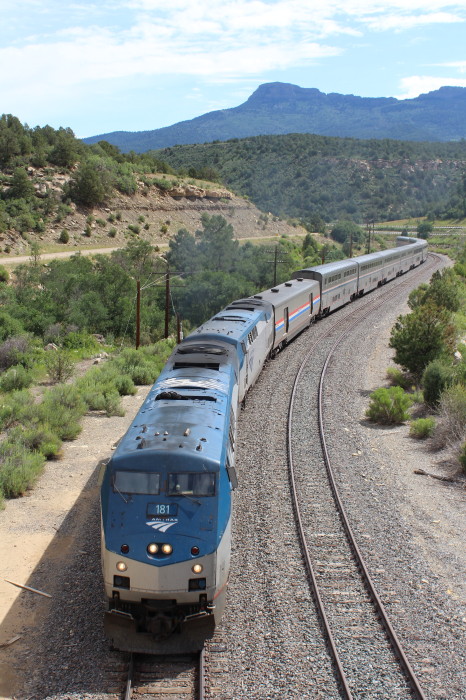
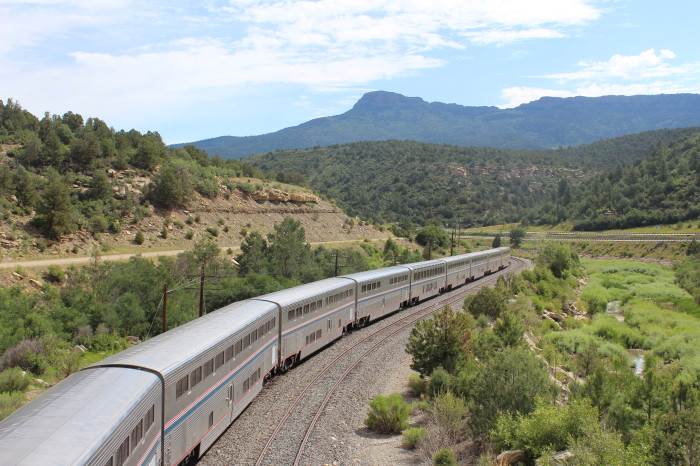
We headed south and pulled off just south of the Dick Wootten
Ranch sign and set up for the next set of photos.
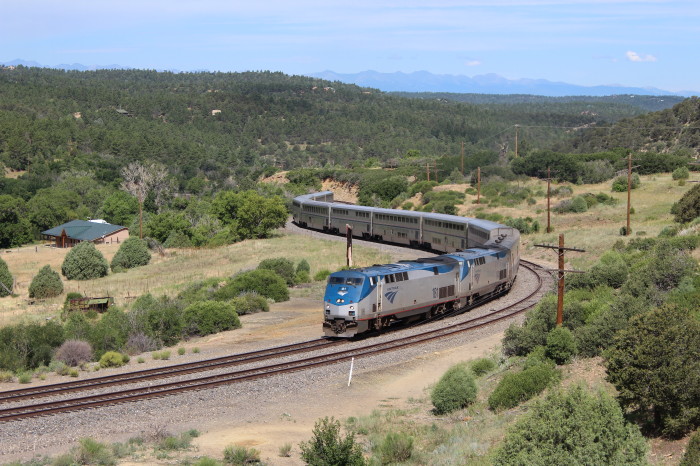
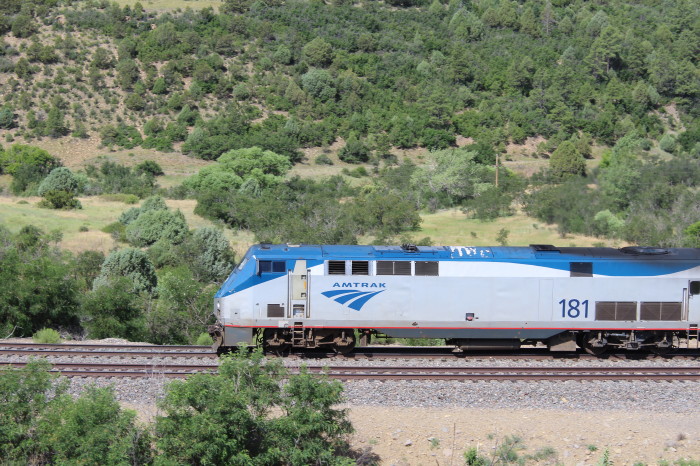
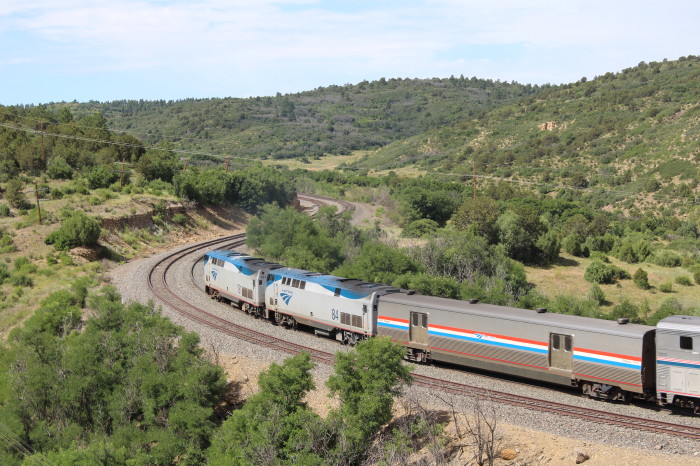
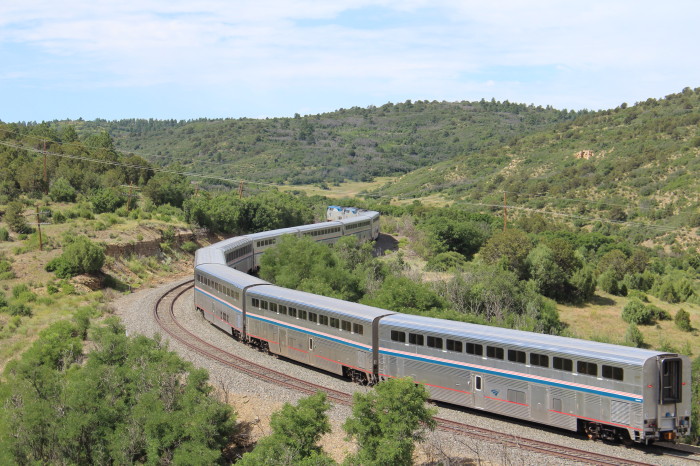
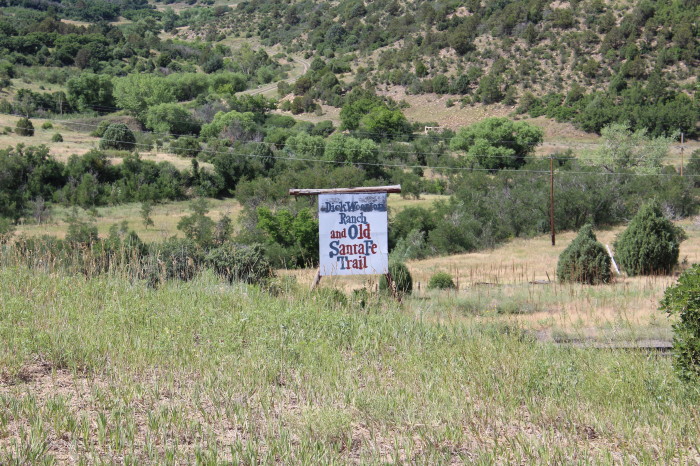
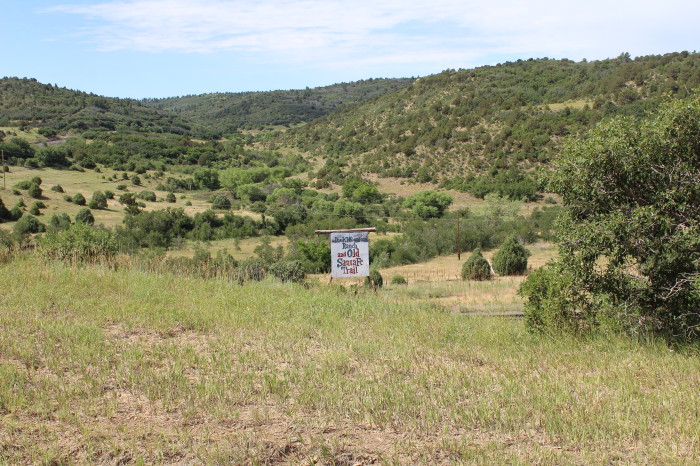
As Chris said, "What a location to watch the Southwest Chief climb
the steep grade of Raton Pass." From here we drove to Canyon
Drive just north of Raton and set up for the next photos.
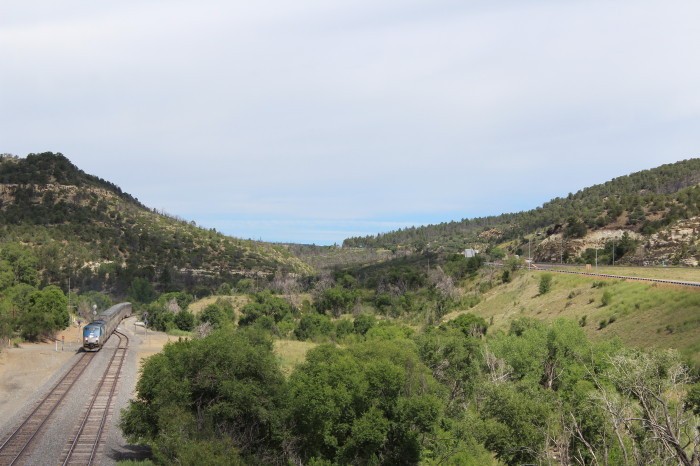
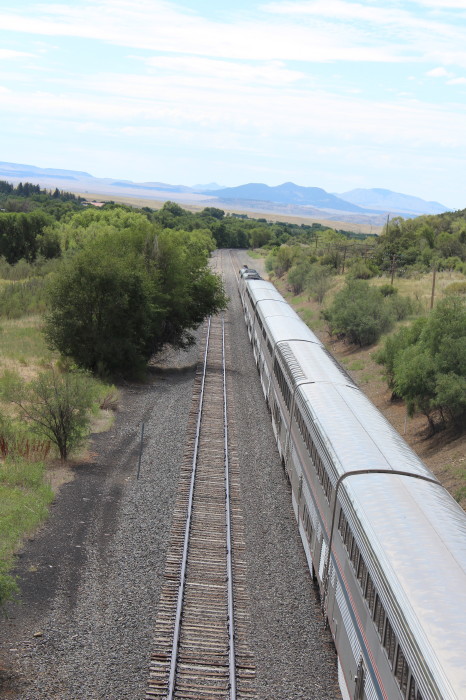
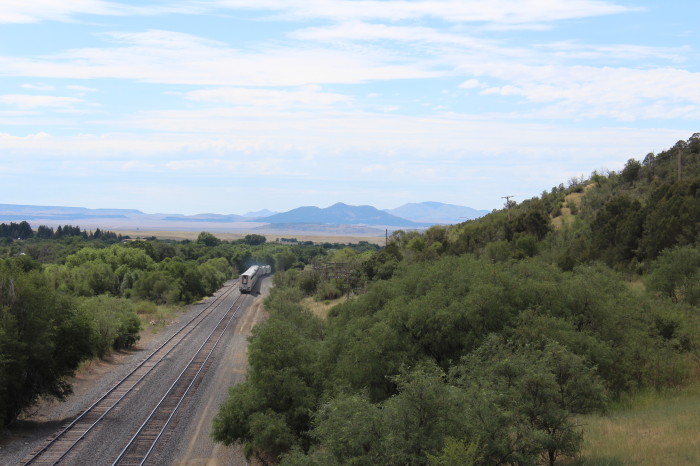
The Southwest Chief comes down the grade into Raton, New Mexico.
From here we drove south on I-25 to the exit 404 and a left on old
US 85 to the semaphores at Colmar.
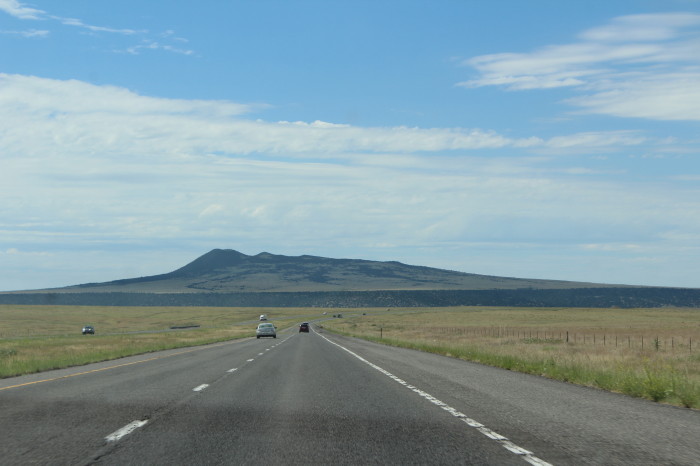
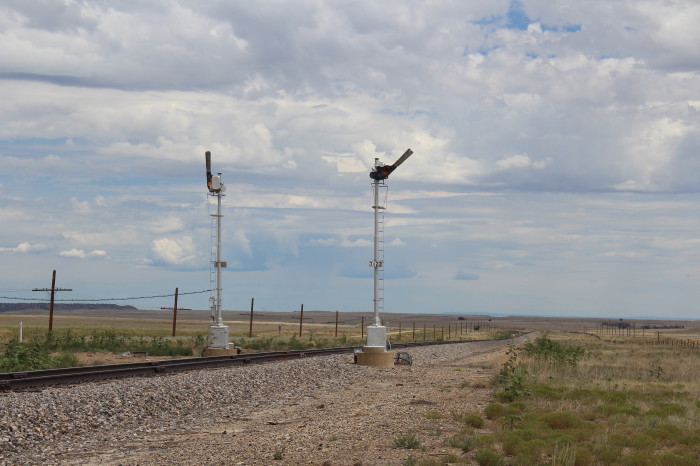
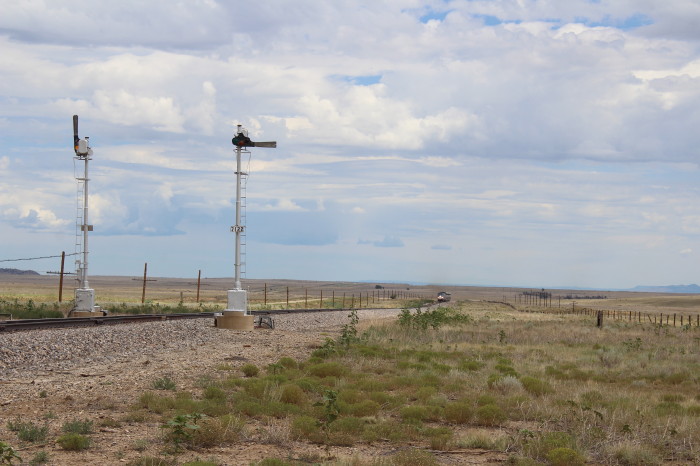
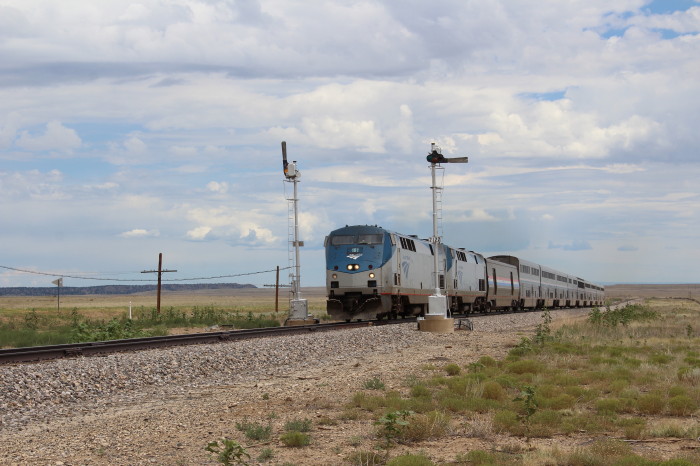
The Southwest Chief splits the semaphores at Colmar, NM.
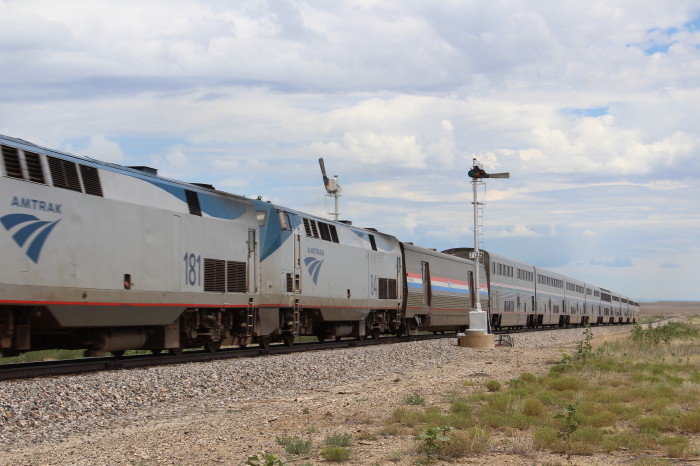
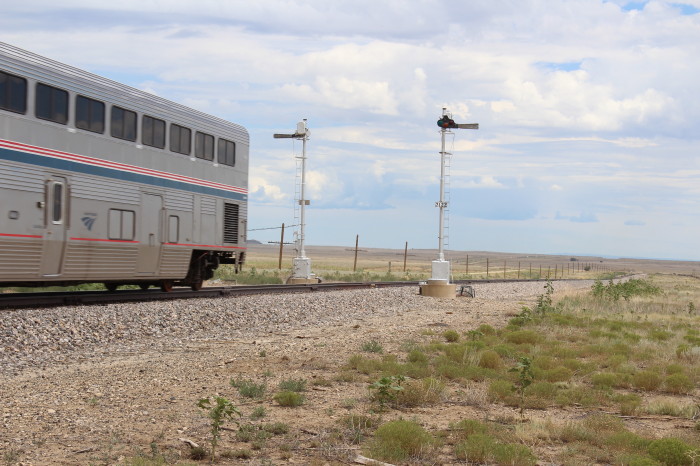
Notice the change in the signals.
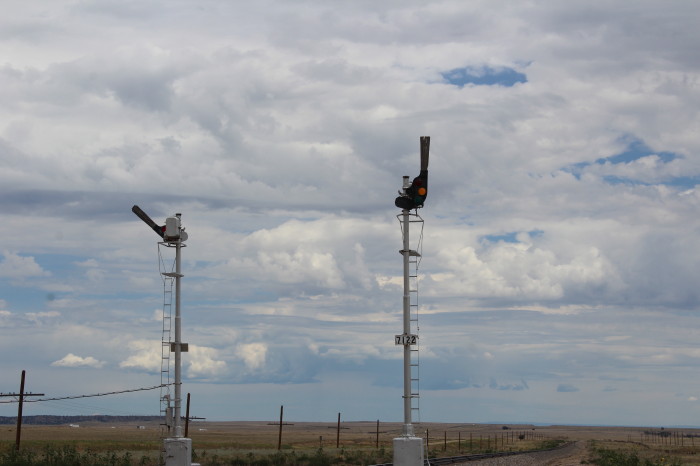
After the Chief passed we said goodbye to the semaphores of Colmar
and then headed south on old US 85 to the next on-ramp to I-25. We
drove south to Las Vegas to our next stop.
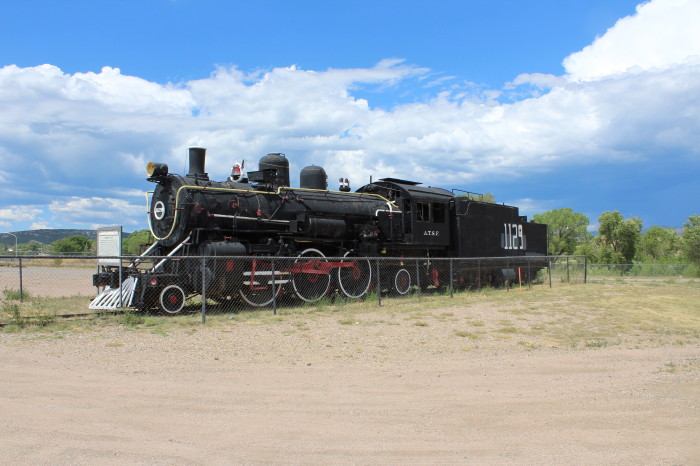
Santa Fe 2-6-2 at Las Vegas on display.

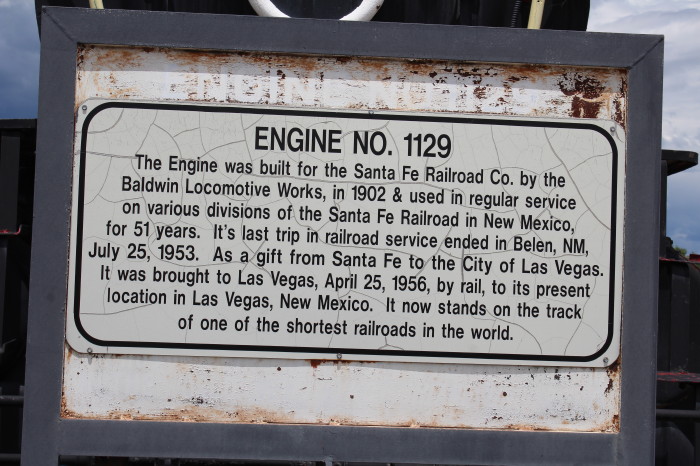
Leaving here we stopped to gas the car and I got some fuel for my
tank. We returned to I-25 taking it to exit 330 to the Bernal
semaphores.
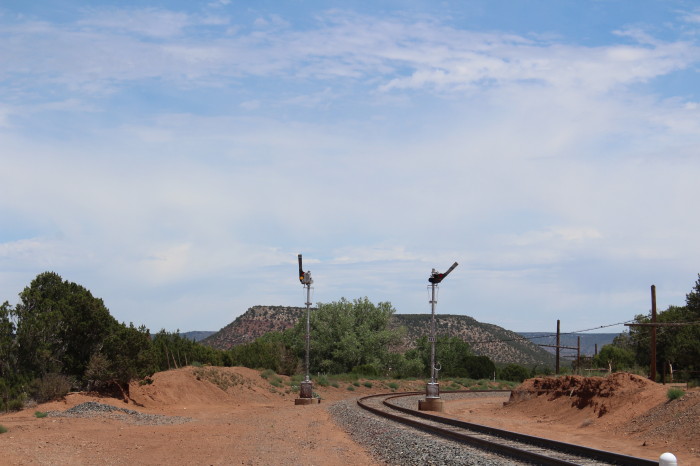
Semaphores at Bernal, NM.
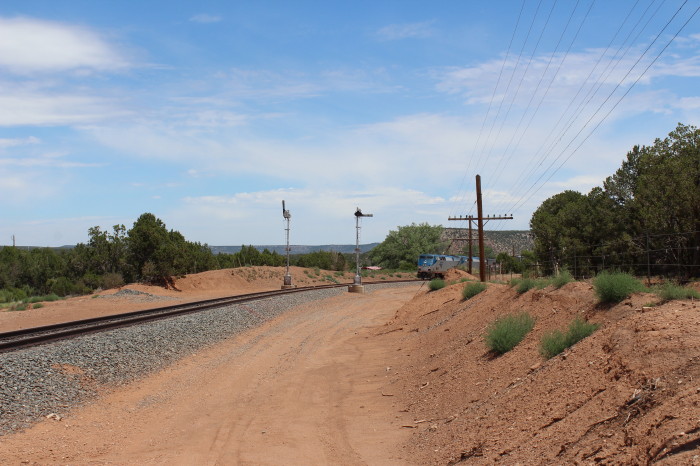
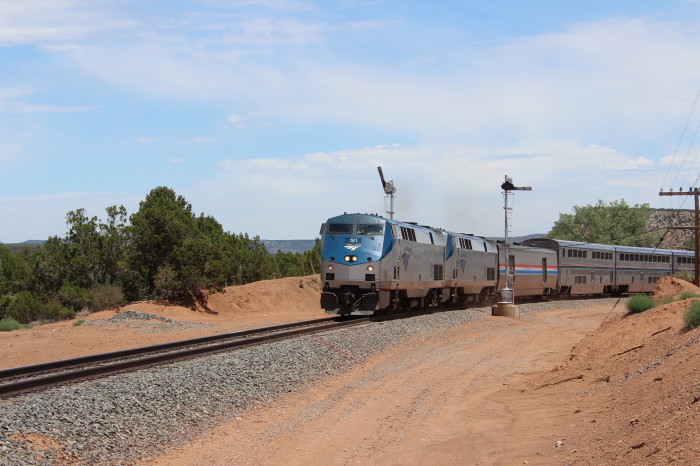
The Chief splitting the semaphores at Bernal.
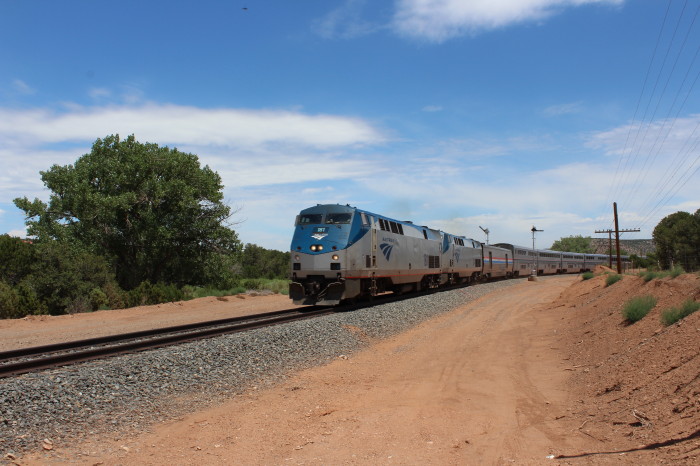
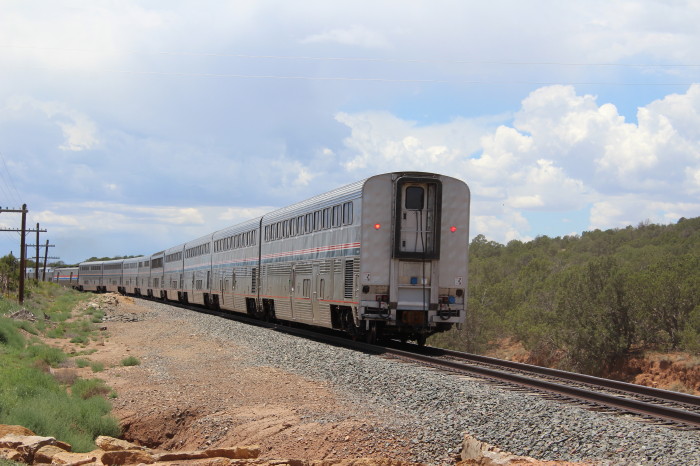
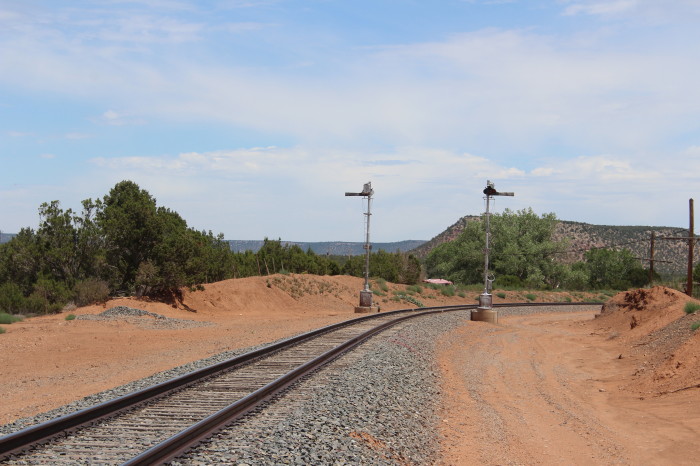
We returned to I-25 heading to next planned stop on this trip.
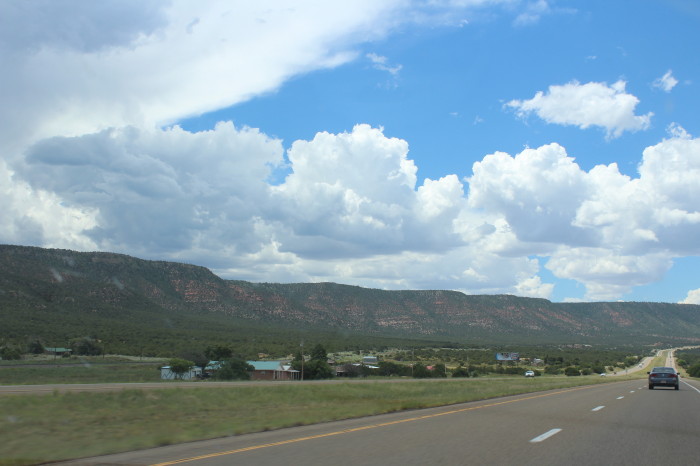
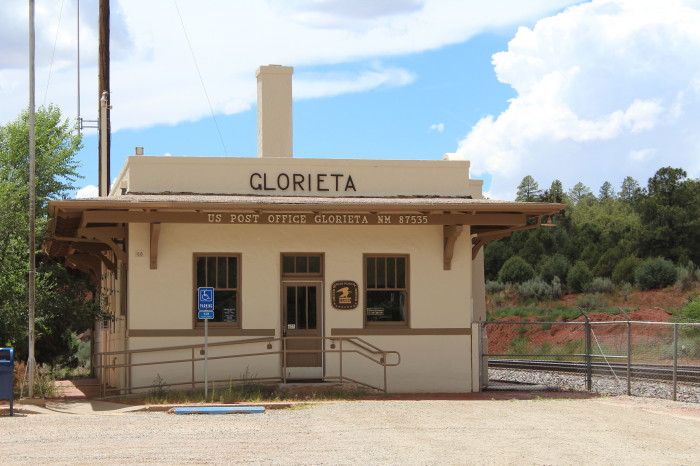
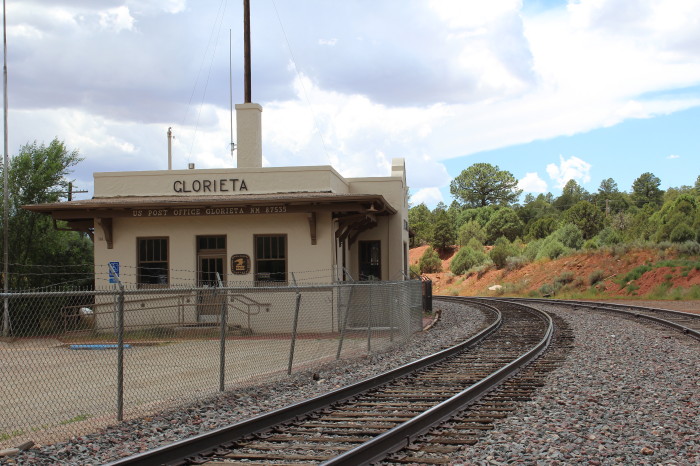
The Santa Fe Glorieta station in a US Post Office. We then
returned to I-25 and took it to NM route 14 which we took south to
the town of Madrid.
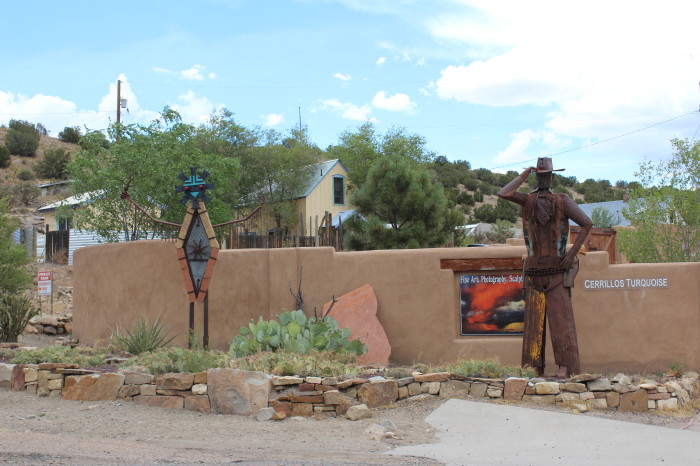
Another
blink-and-you'll-miss-it town is Cerrillos, a couple of miles
north of Madrid off SR 14. As early as 1,000 B.C., prehistoric
people using stone axes and antler picks worked the surrounding
region for turquoise, that beautifully hued mineral long prized
as a gem, and ornamental stone. Cerrillos turquoise even ended
up adorning the crown jewels of Spain. Gold, silver, lead and
zinc also were extracted from area mines that reached
their peak in the 1880s, when the town boasted four hotels and
more than 20 saloons.
Madrid's spot of a hamlet in
the high desert country of central New Mexico has had several
incarnations over the course of approximately 2 centuries: coal
mining boom town, home of the Madrid Miners minor league
baseball team, all-but-deserted "ghost town," offbeat artists'
collective. The last one describes Madrid today and is one
reason why it's one of the state's most distinctive small
communities.
Today there are reminders of
Madrid's past in names like the Mine Shaft Tavern and the Ghost
Town Trading Post. There's a definite hippie sensibility-a stone
gargoyle here, a whiff of incense there. And more recently a
biker contingent had made its presence known.
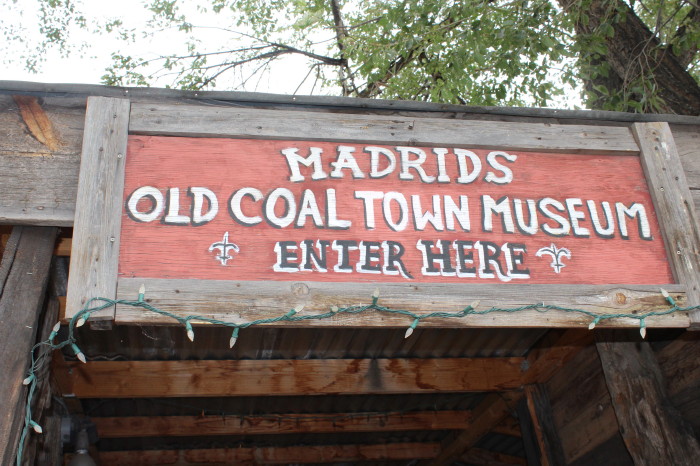
Several buildings reflecting
Madrid's ghost town past displays old mining equipment and
vintage vehicles. There are exhibits pertaining to Madrid's
famous Christmas lights and the Madrid Miners baseball team, as
well as a 1901 Richmond Steam locomotive. The Engine House
Theatre offers music and many special events on weekends in
season.
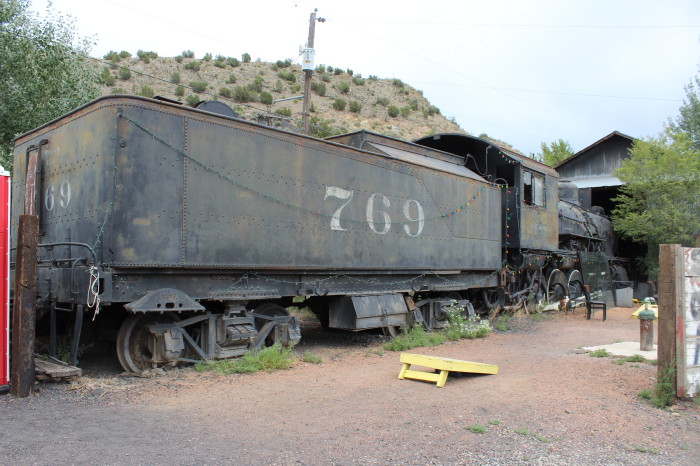
Santa Fe 769 2-8-0 769 and part of back wall of the
stage.
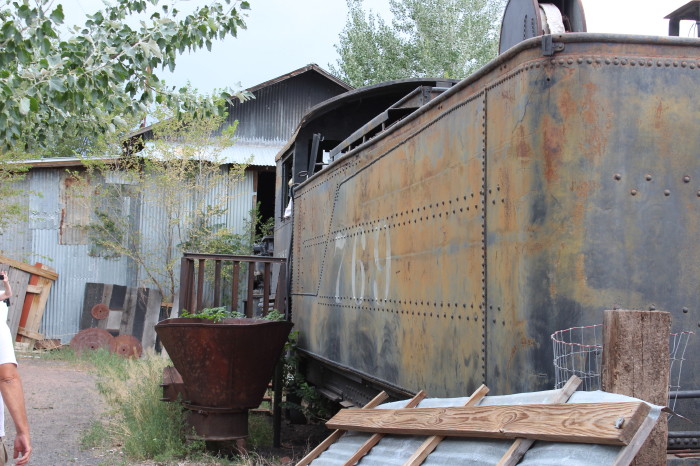
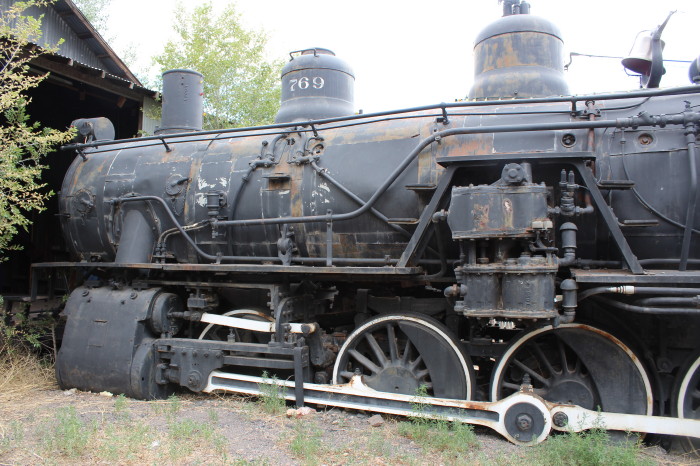
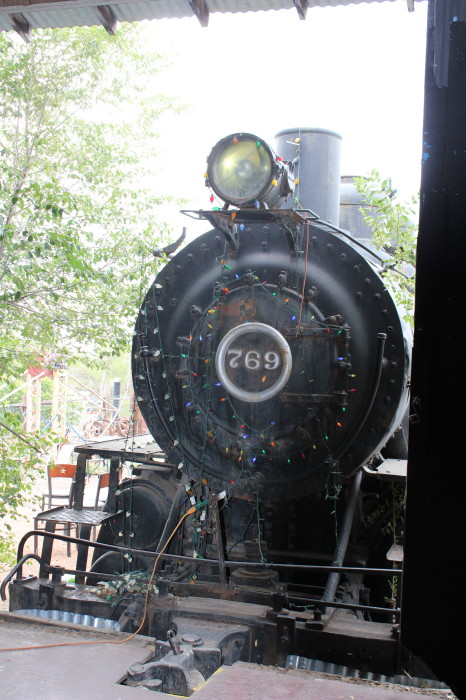
Stage view.
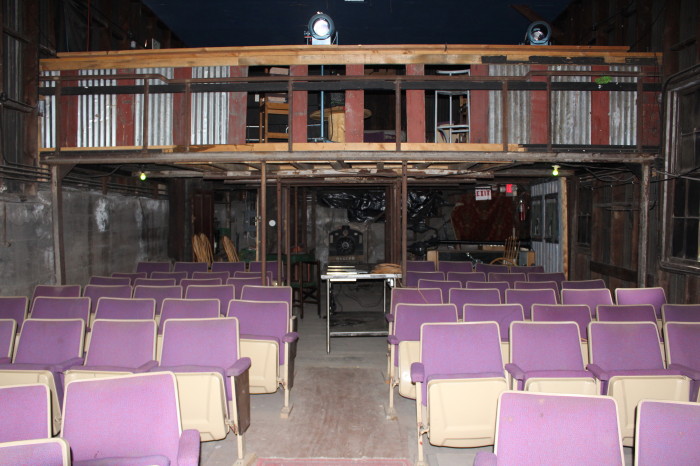
View of Engine House Theatre.
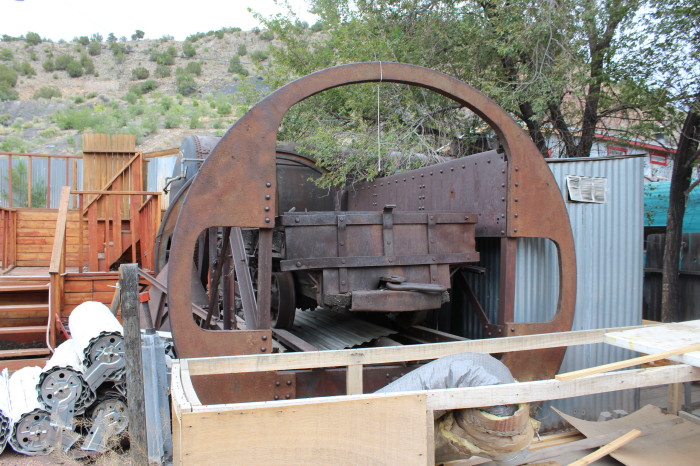
A rotary car dumper.
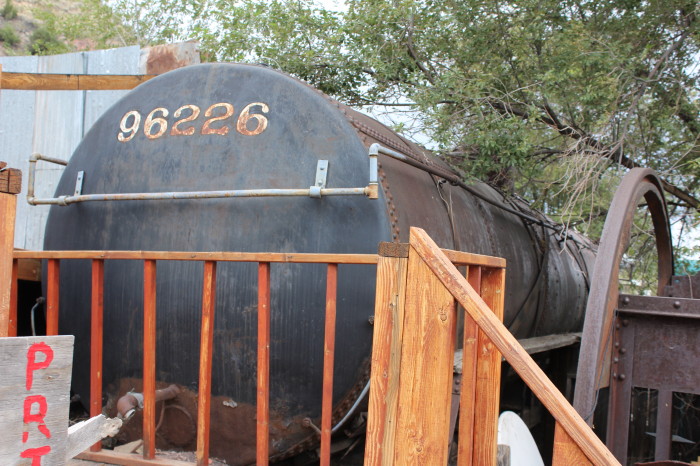
GTLX tank car 96226.
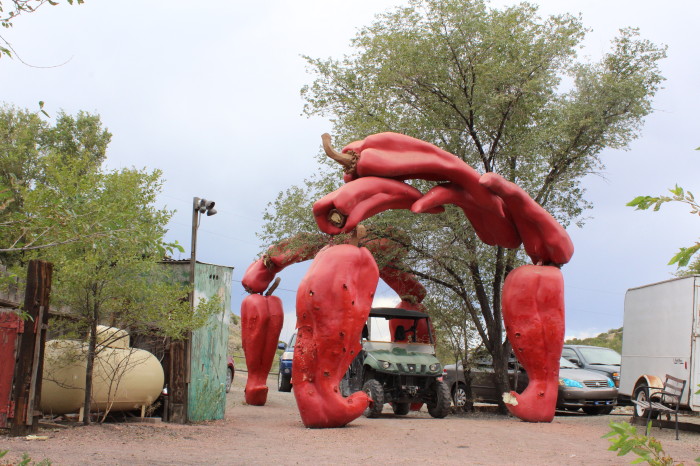
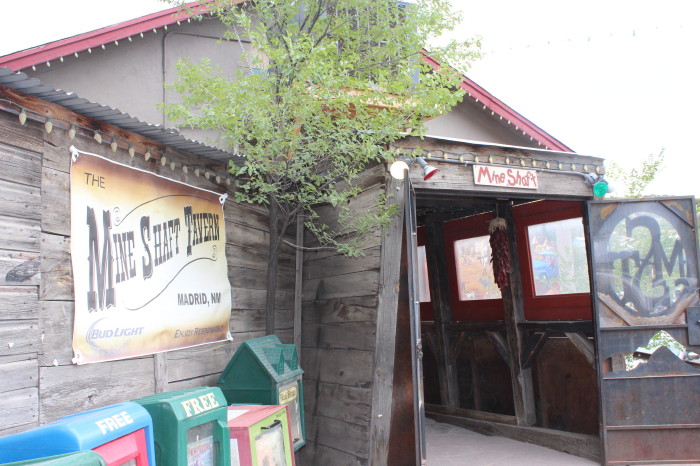
Leaving Madrid, we continued south on SR 14 to SR 344 south.
Bad weather was brewing as we
traveled south. We reached I-40 and headed east to Moriarty
where we turned south and headed into the worst thunderstorm of
the trip so far. We made it to just west of Willard where we
turned onto US 60 and came out of it as we were following a BNSF
westbound train. We managed to get ahead of it and picked a
grade crossing to the south and set up and waited.
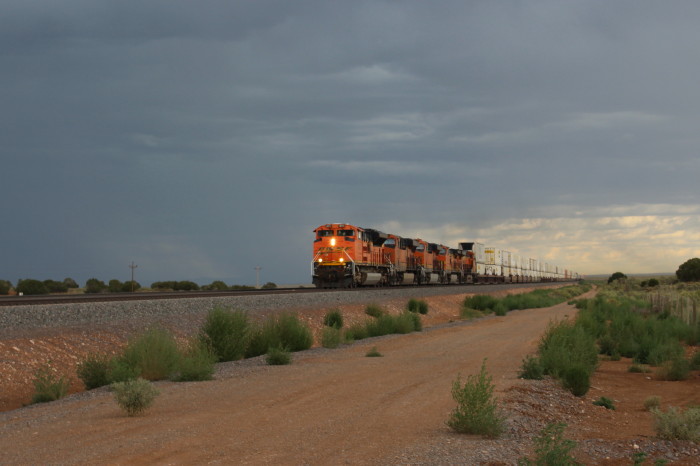
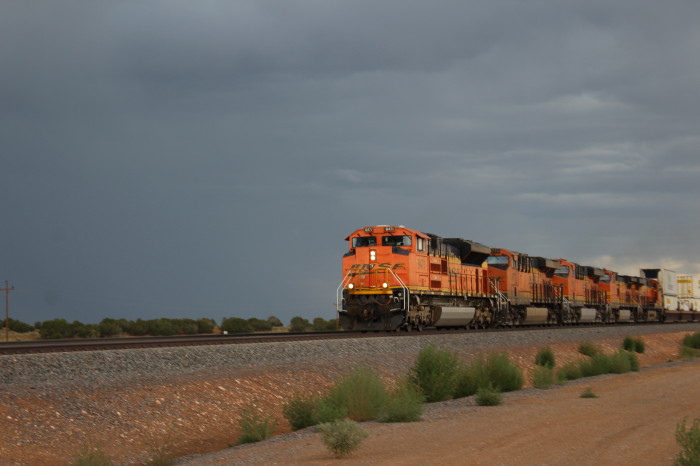
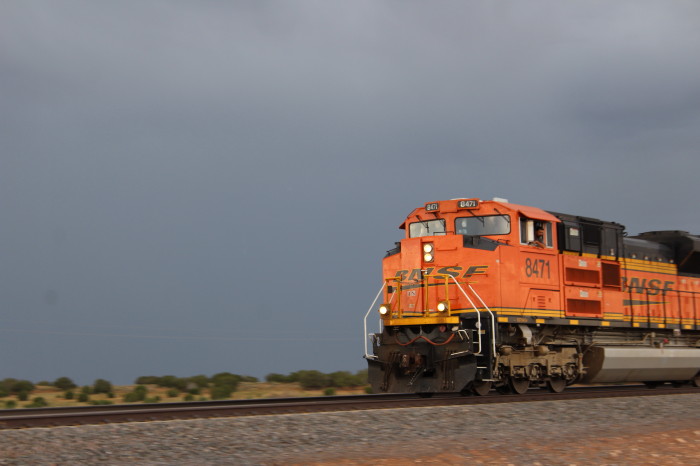
BNSF 8471 West at the county road B028 grade crossing.
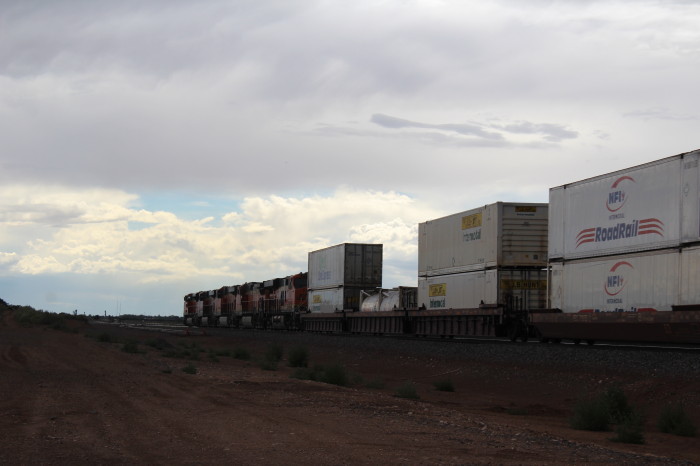
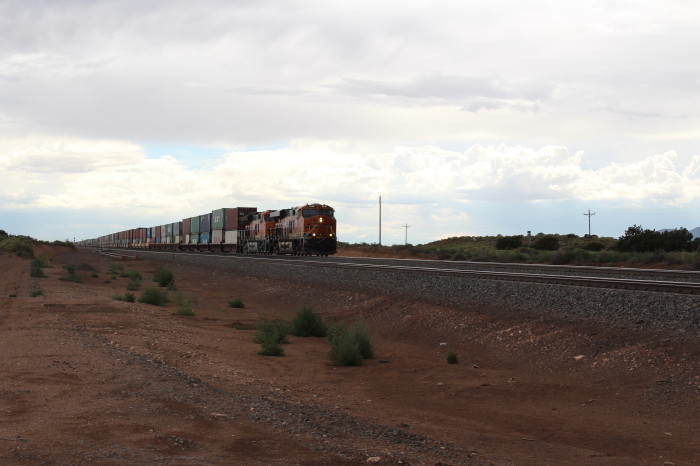
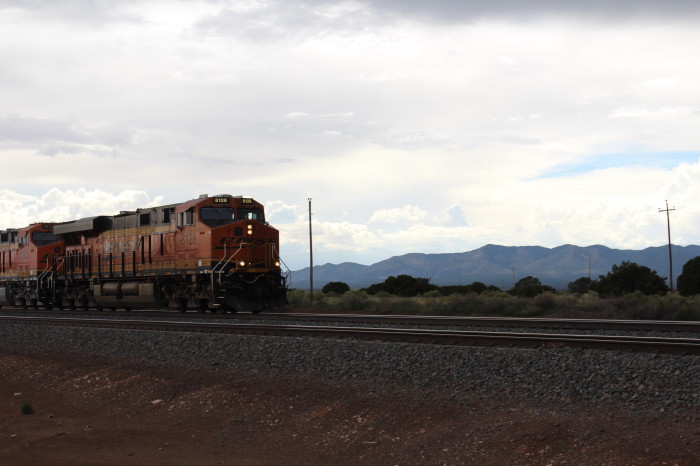
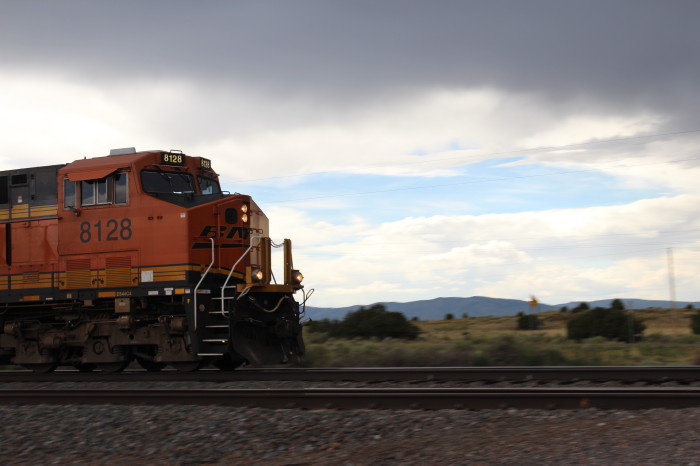
BNSF 8128 East at the county road B028 grade crossing. From here
we drove west on US 60 to Mountainair.
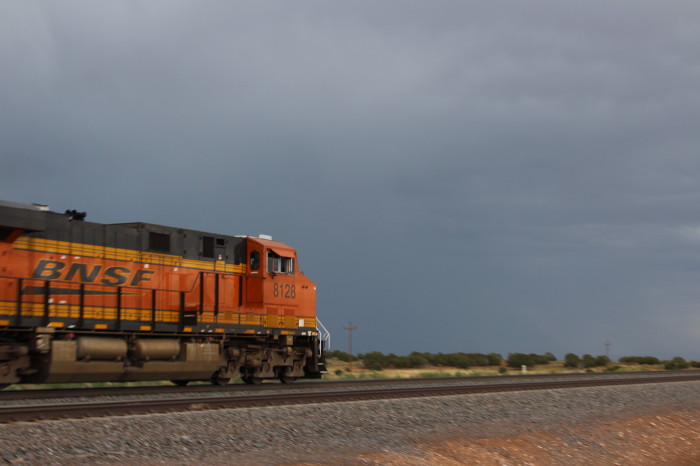
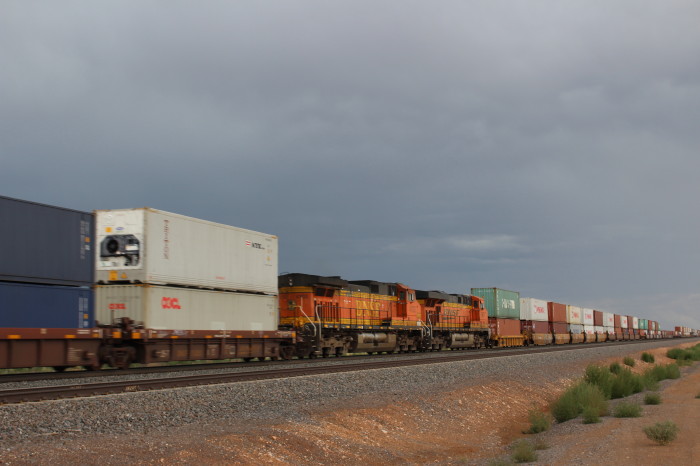
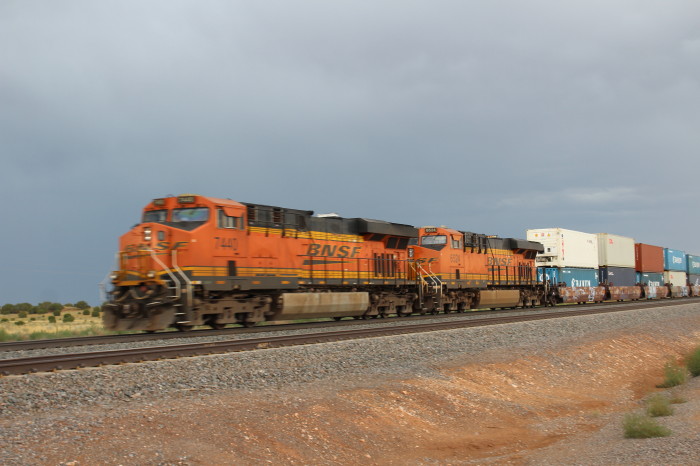
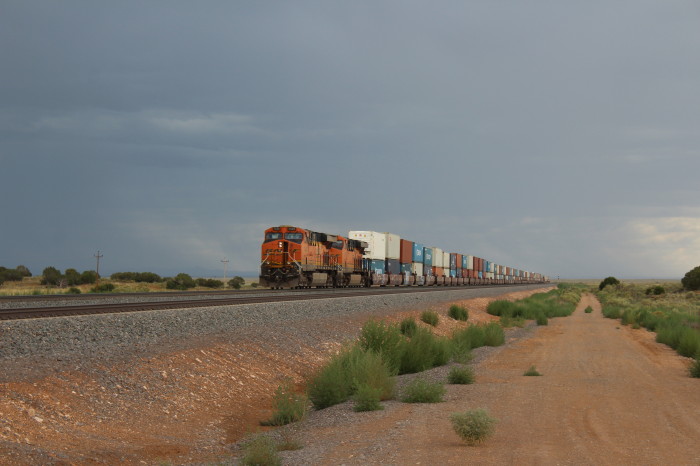
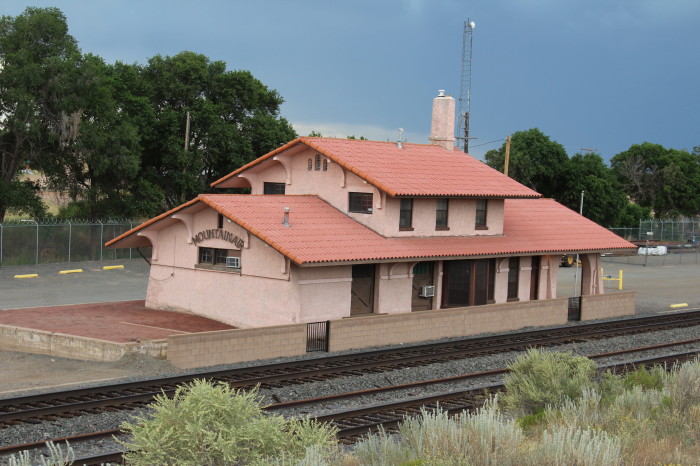
The Santa Fe Mountainair station. We continued west of US 60 and
then came upon another train.
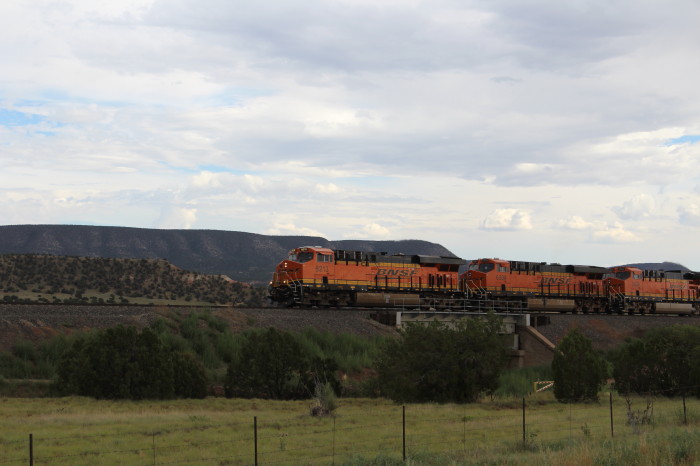
BNSF 8213 along US 60 west of Mountainair.
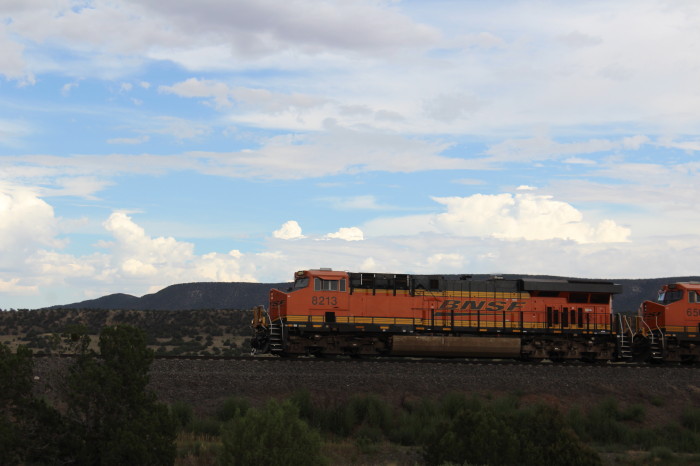
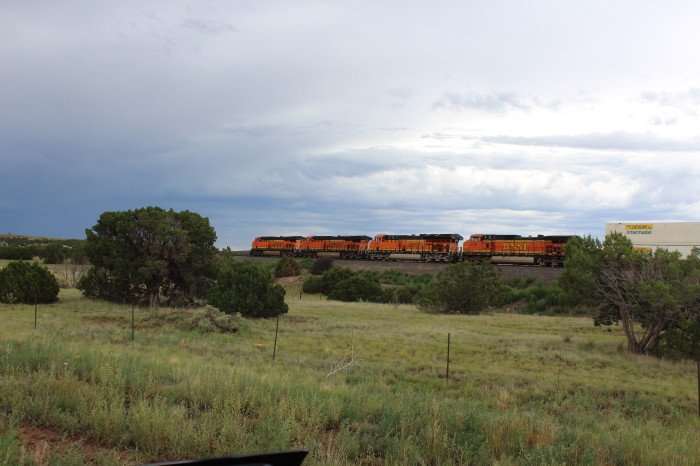
We then drove to the US 60 bridge over the BNSF mainline just east
of Abo Canyon and set up for a train.
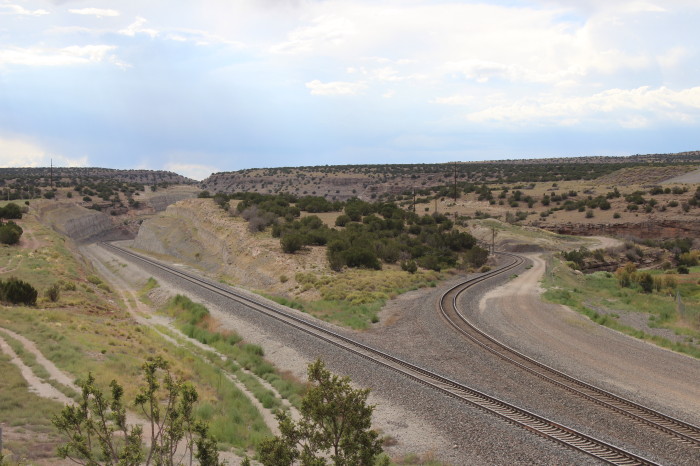
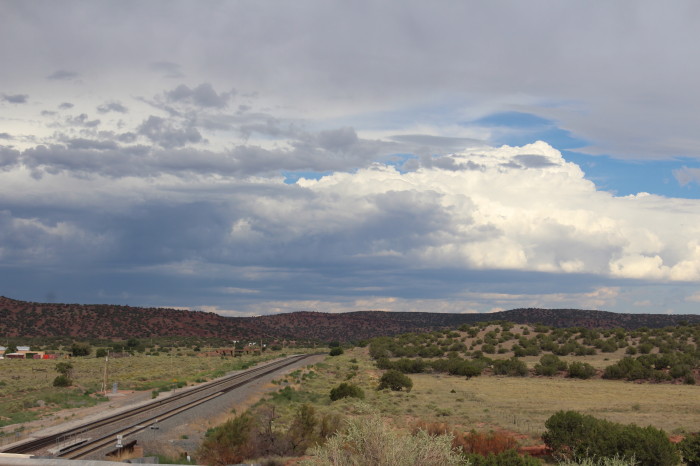
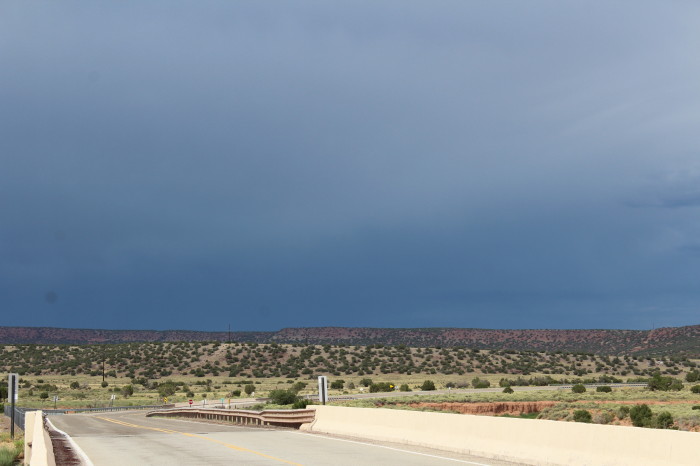
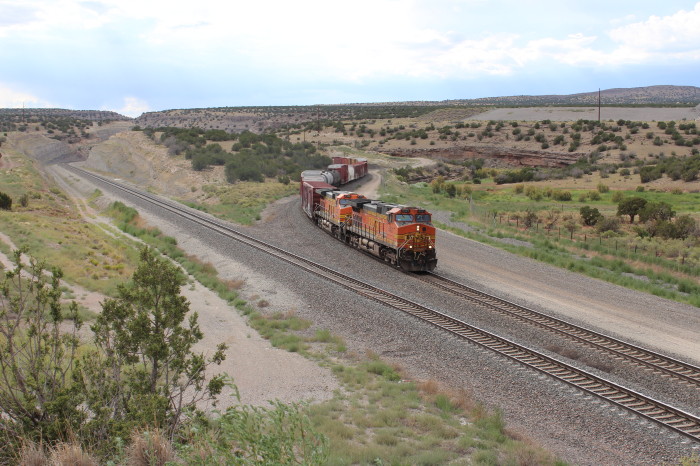
It didn't take too long before hearing an eastbound train working
up the grade through Abo Canyon.
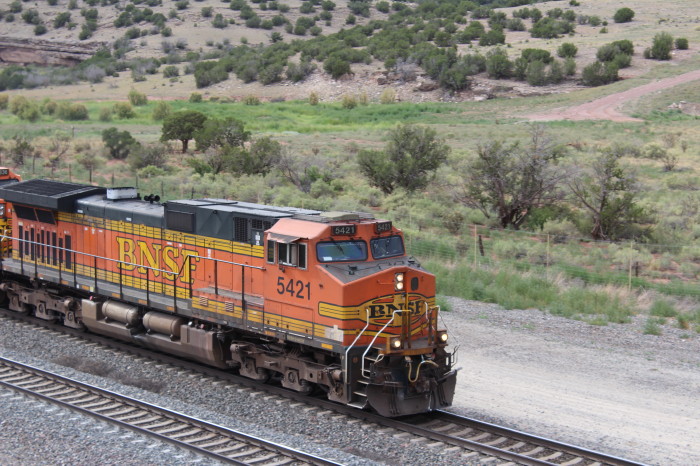
BNSF 5421 East came out of Abo Canyon and heading east. We headed
west on US 60 to Belen, the next stop.
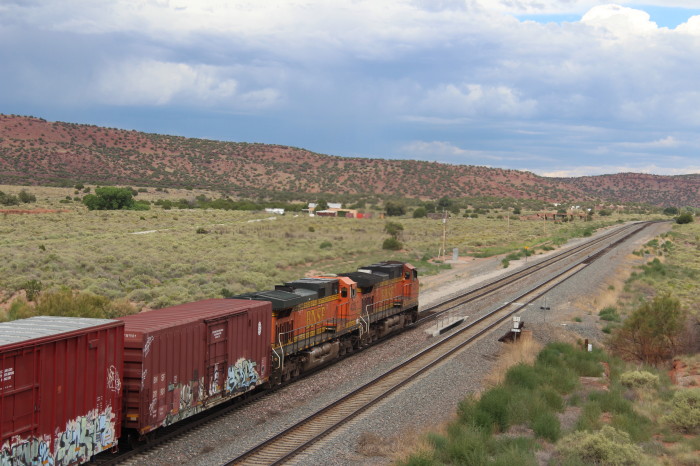
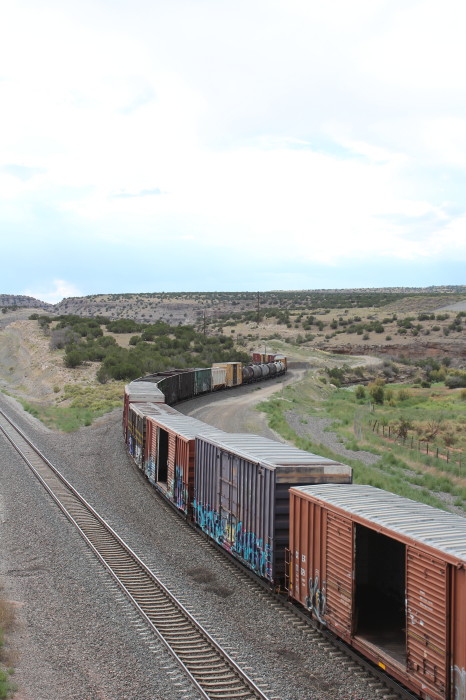
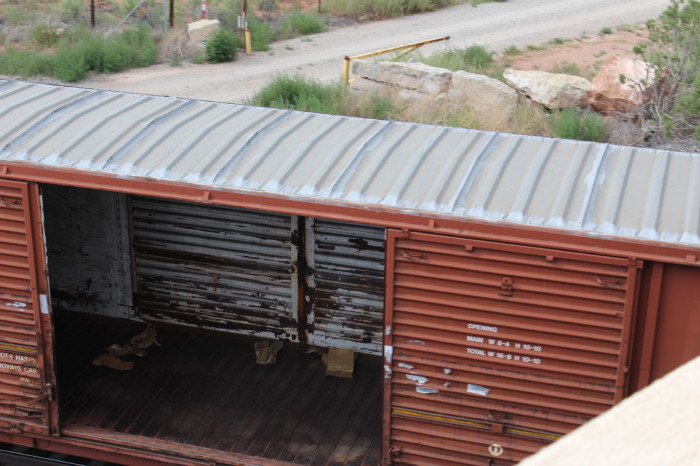
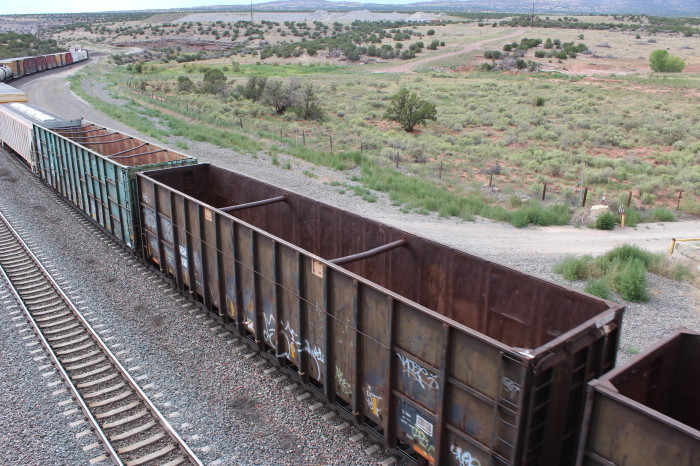
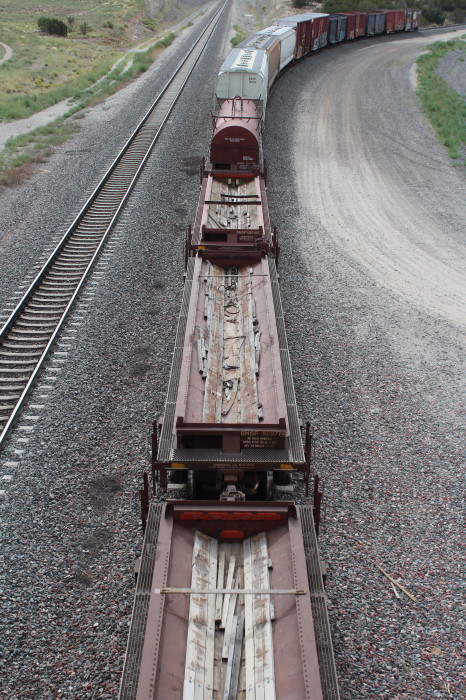
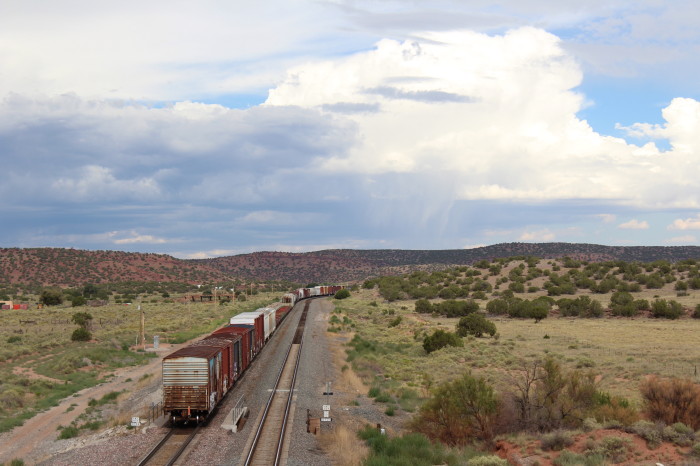
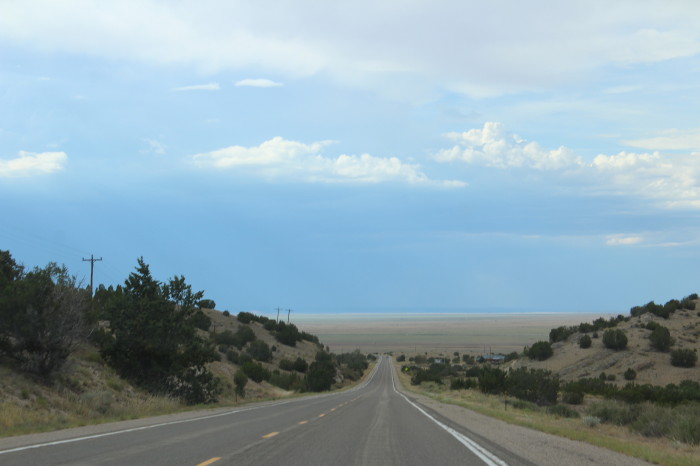
At the junction of US 60 and state route 47, we went north on 47
to I-25 (again).
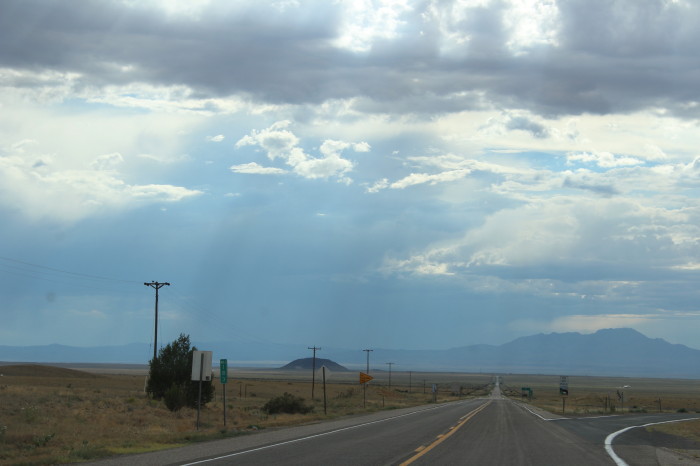
Traveling on St Rt 47.
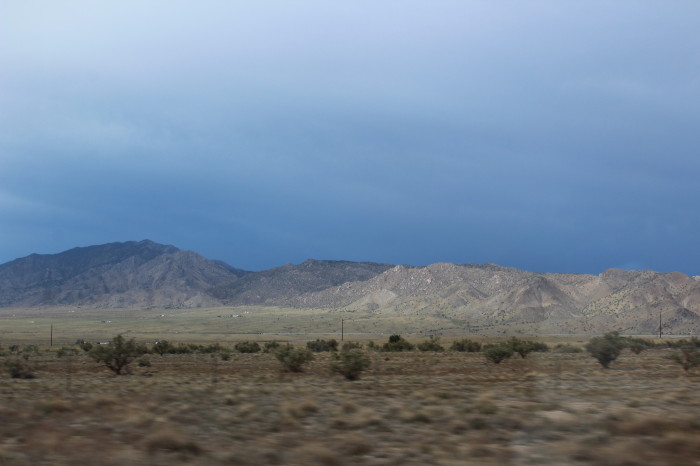
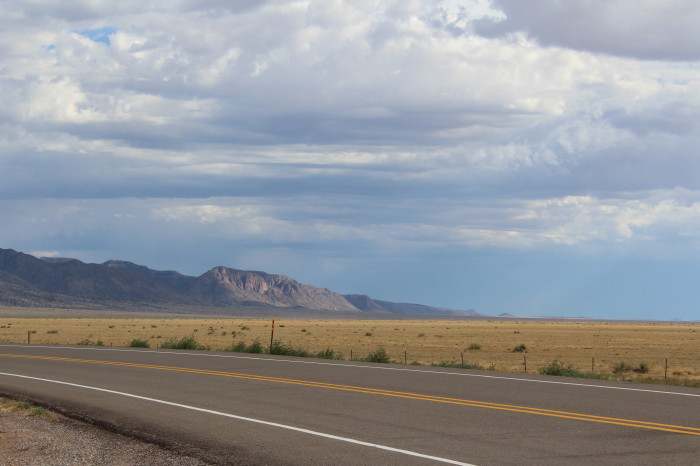
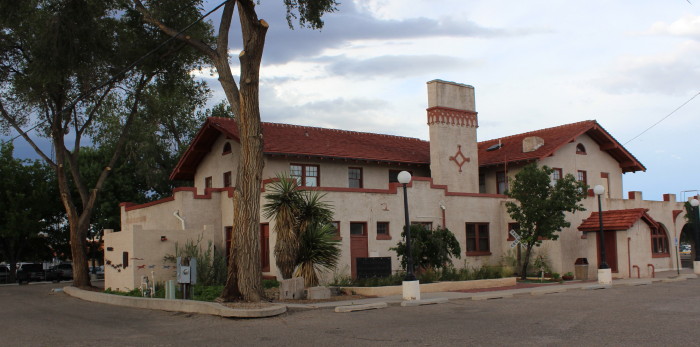
The Santa Fe Railroad Belen Harvey House is now a museum.
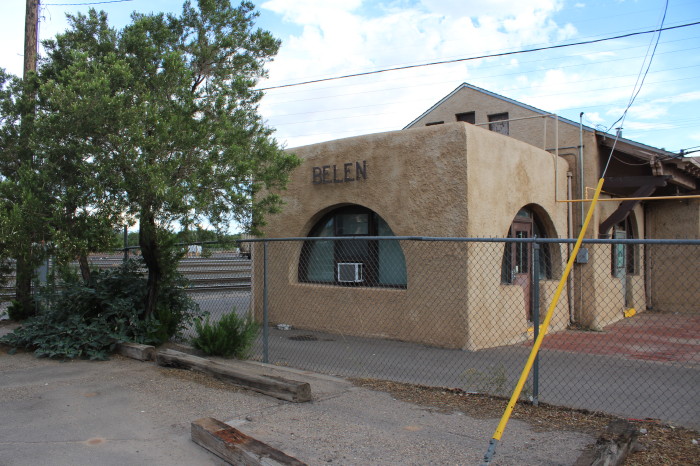
The building served as a restaurant for Santa Fe Railroad
passengers 1910-39.
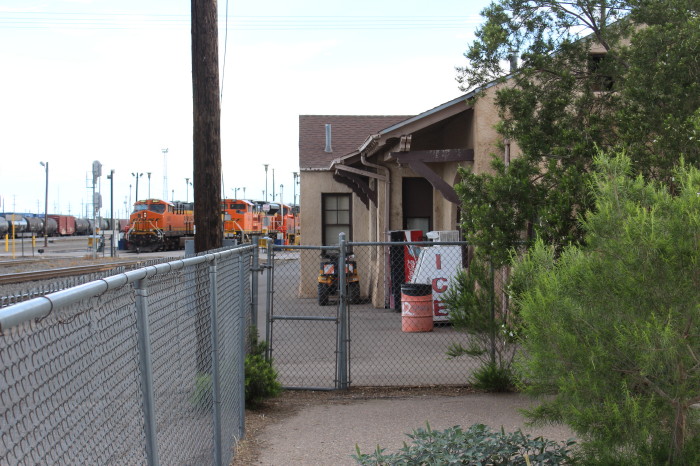
Locos on refueling pad.
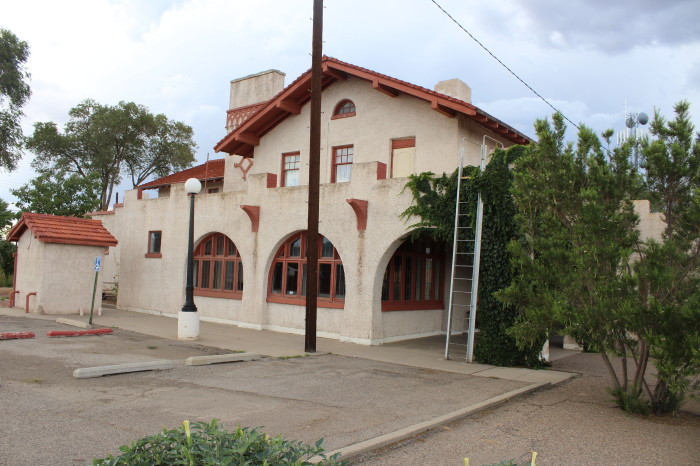
Belen, which in Spanish means "Bethlehem," was founded by Capt.
Don Diego Torres and Antonio Salazar in 1740. By the late 19th
century, the farming community was a major hub on the Atchison,
Topeka and Santa Fe Railroad.
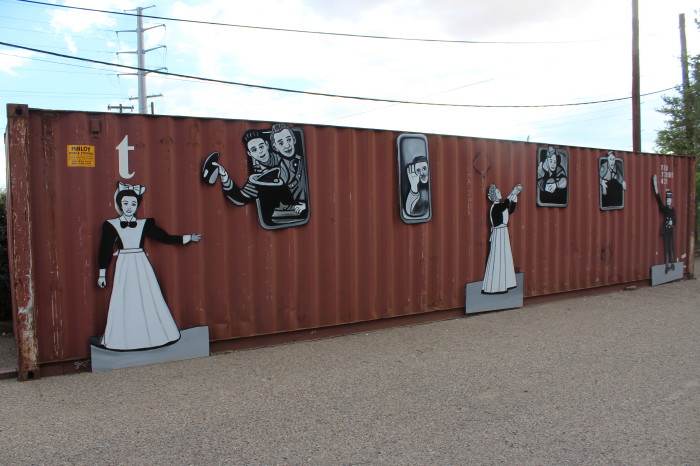
Harvey House display next to museum.
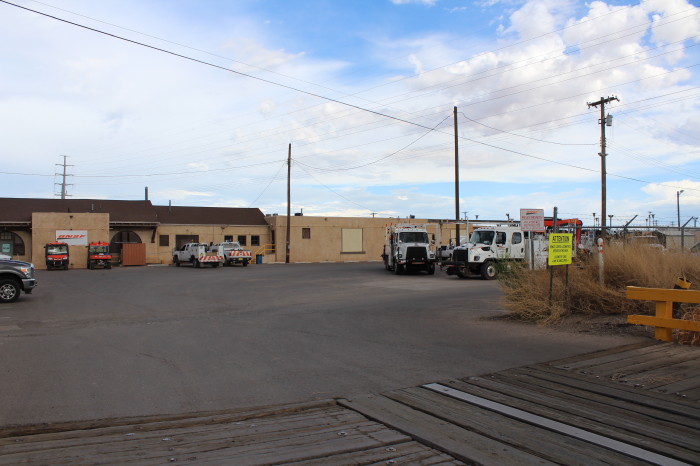
BNSF yard adjacent the museum. We left here and one block over we
found out last stop of today.
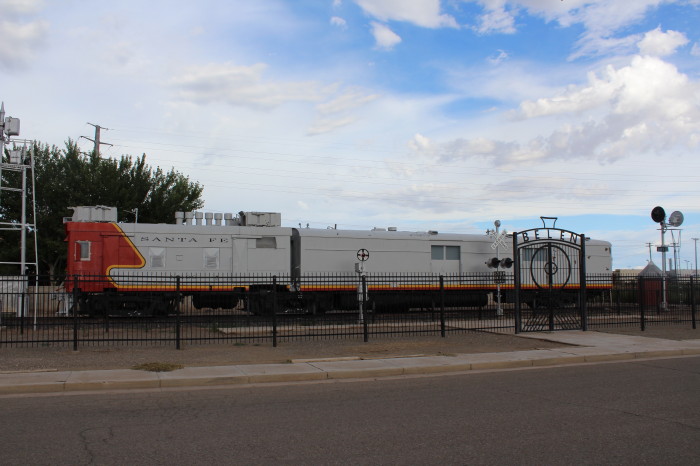
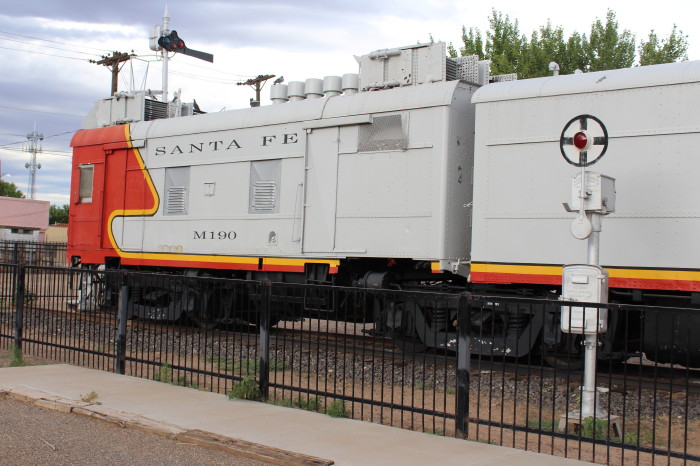
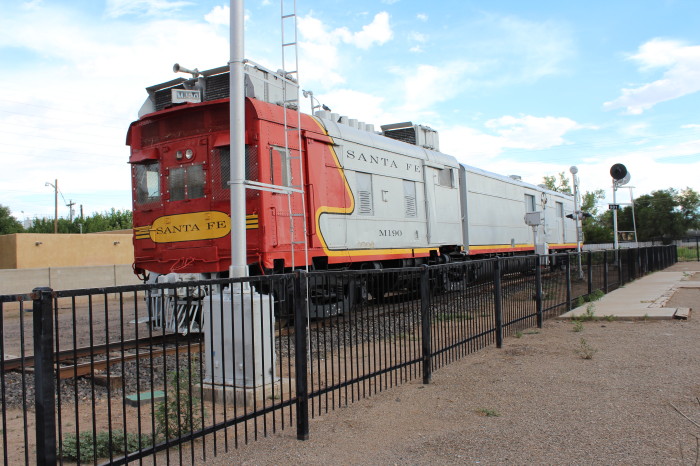
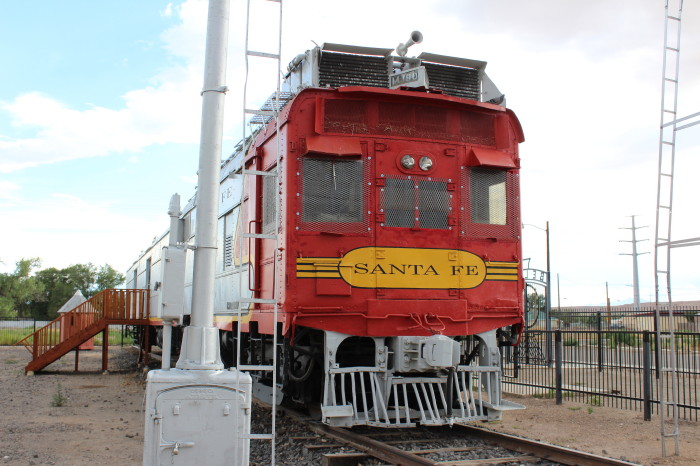
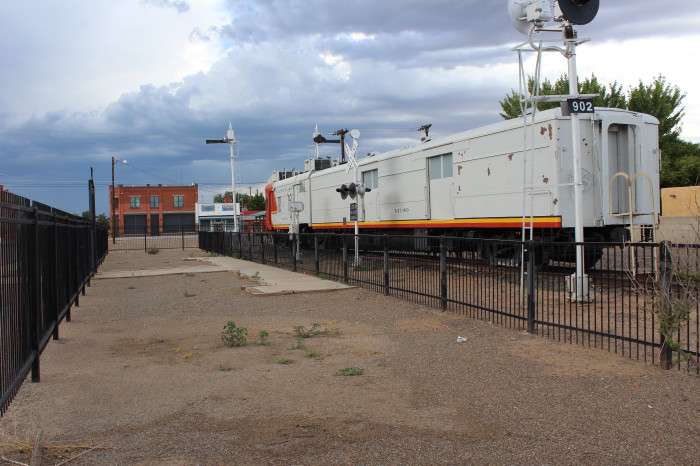
The Santa Fe M-190 display in Belem.
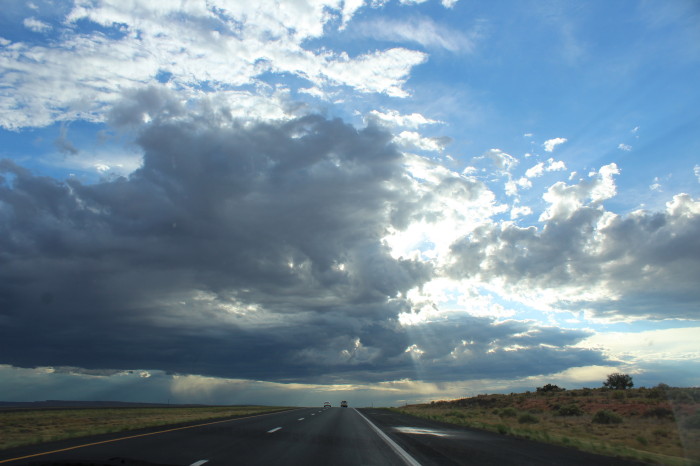
We then returned to I-25
north taking it thirteen miles to Los Lunes where we turned onto
St Rt 6, stopping at KFC for some dinner to go. We traveled on
ST Rt 6 to I-40 to Grants where we checked in at the Travel
Lodge for our night.
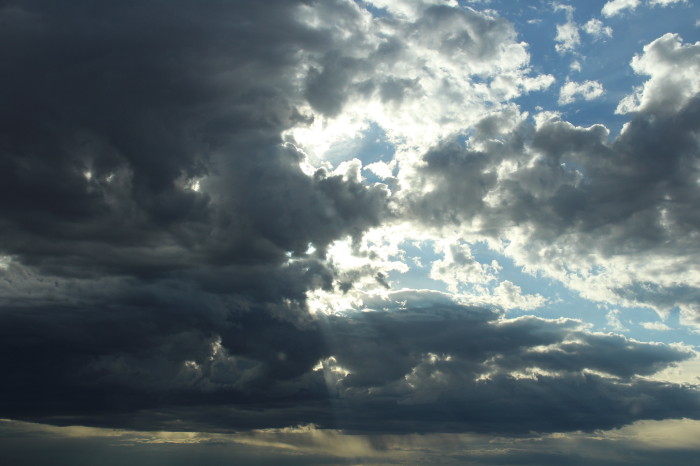
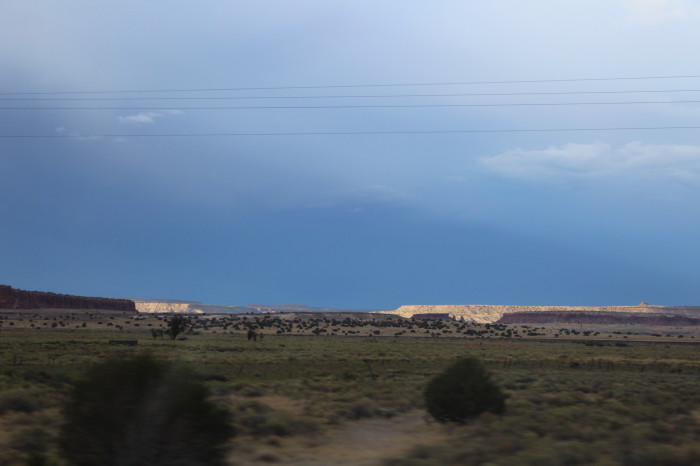
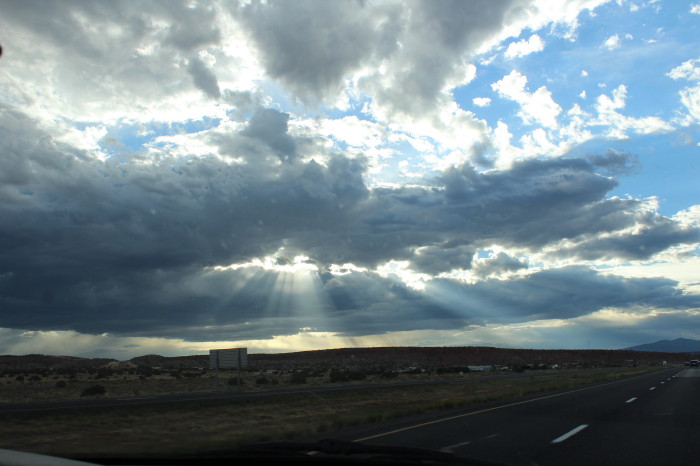
Thanks
for reading.
Text and Photos by Author
The
author retains all rights. No reproductions are allowed
without the author's consent.
Comments
appreciated at .... yr.mmxx@gmail.com

